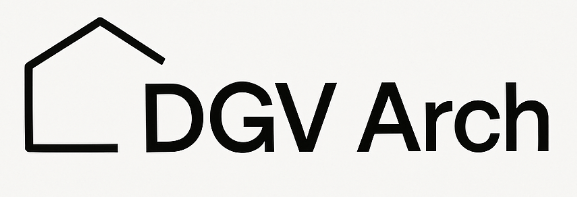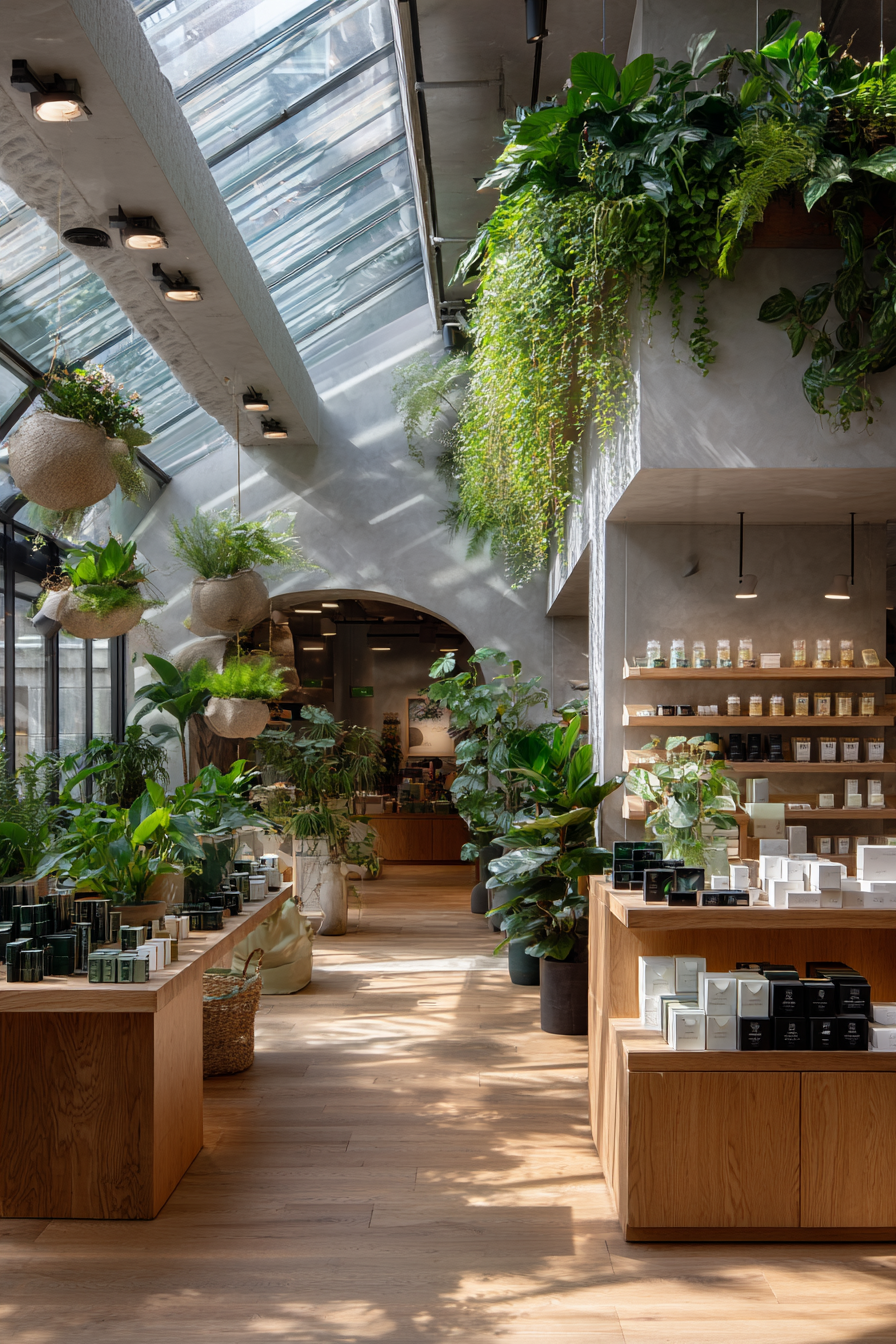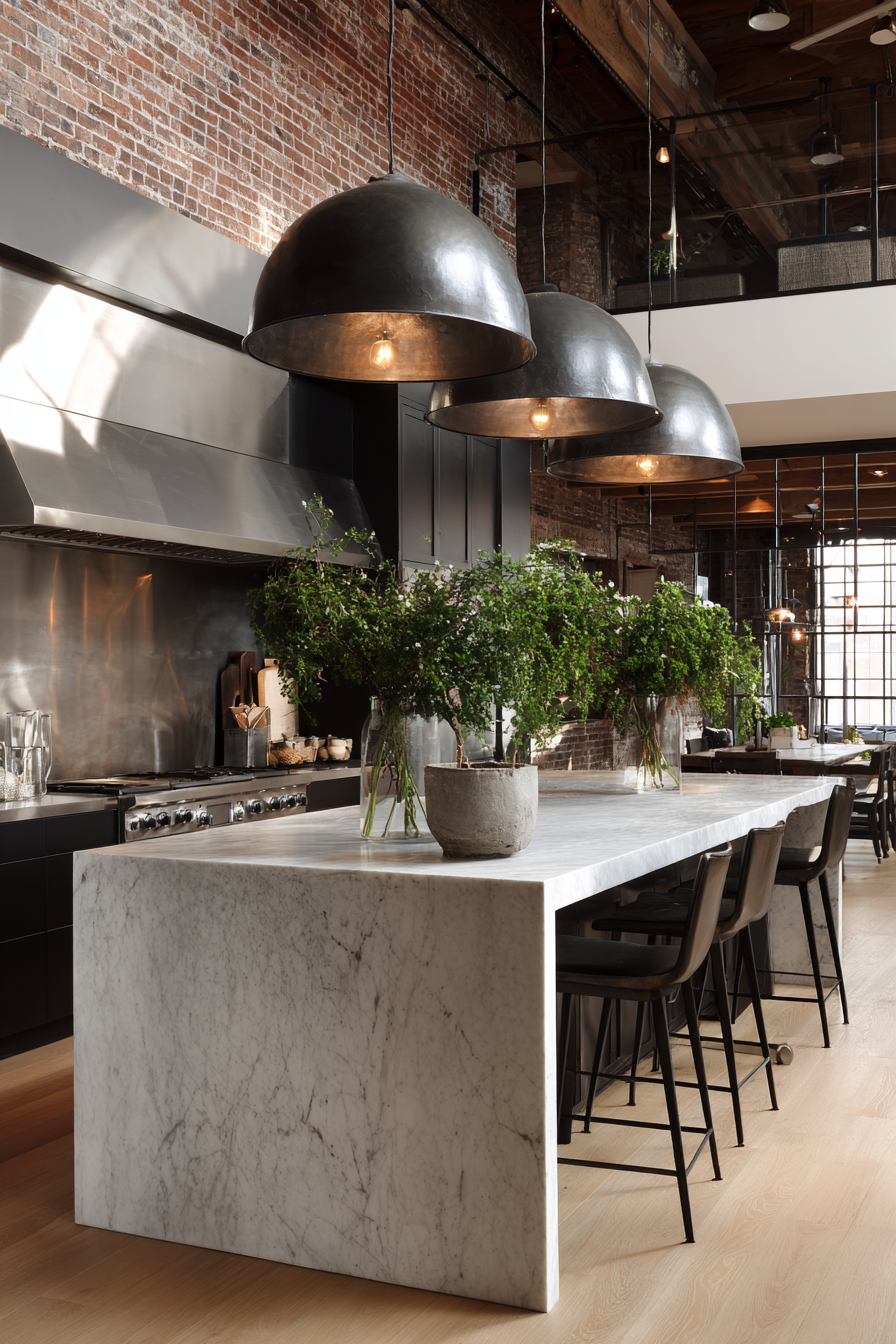Can adding nature to our homes and offices really make us feel better? The answer is yes, through biophilic interior design. It aims to reconnect us with the outdoors.
Bringing nature indoors boosts both our physical and mental health. Adding elements like plants, wood, and stone makes spaces look good and feel healing.
This trend in eco-friendly interior design is growing. More people now see the value of living sustainably and healthily every day.
Key Takeaways
- Biophilic design reconnects humans with nature.
- Incorporating natural elements enhances well-being.
- Eco-friendly design is becoming increasingly popular.
- Nature-inspired spaces can be restorative.
- Sustainability and wellness are key benefits.
What is Biophilic Interior Design?
Biophilic interior design is all about making spaces that feel connected to nature. It’s a way to bring the outdoors inside through design. This approach helps us feel more at peace and connected to the earth.
It’s not just about adding plants to a room. It’s about creating a space that feels calming and restorative. This design style helps us feel healthier and live more sustainably.
Definition and Overview
Biophilic interior design means adding natural elements to our built environments. This can include natural light, ventilation, organic materials, plants, and water features.
There are three main parts to biophilic design. These are visual connections to nature, material connections, and non-visual connections.
- Visual connections to nature, such as views of gardens or parks
- Material connections, like the use of wood, stone, and other natural materials
- Non-visual connections, including the sounds of water or the scent of plants
| Element | Description | Benefits |
|---|---|---|
| Natural Light | Incorporating sunlight into the design | Improves mood, regulates circadian rhythms |
| Indoor Plants | Adding greenery to the space | Purifies air, reduces stress |
| Organic Materials | Using materials like wood and stone | Creates a sense of warmth, connects to nature |
Historical Context
The love for nature, or biophilia, has been with us for centuries. From ancient times to today, people have always valued nature’s beauty. Designers now use natural elements to improve our well-being.
Throughout history, architecture and design have included biophilic elements. This has helped us feel more connected to the natural world.
The Benefits of Biophilic Design for Spaces
Biophilic design connects nature with built environments. It uses elements like plants, natural light, and water to make spaces better. These spaces are not just pretty but also good for health and work.
Enhanced Well-being
Biophilic design boosts well-being. Studies show it can lift mood, reduce depression, and lower blood pressure. For example, a study in the Journal of Environmental Psychology found people with plants at work felt better and were less stressed.
Table: Benefits of Natural Elements on Well-being
| Natural Element | Benefit |
|---|---|
| Plants | Improved mood, reduced stress |
| Natural Light | Regulated circadian rhythms, improved mood |
| Water Features | Calming effect, reduced stress levels |
Increased Productivity
Biophilic design also boosts productivity. It makes environments more natural and calm, helping people focus better. A Harvard Business Review study found workers in natural environments were 15% more productive than those without.
Reduced Stress Levels
Biophilic design also lowers stress. Elements like plants and water features calm the mind, reducing stress hormones. A study in the Journal of Environmental Psychology found natural environments can lower cortisol by up to 12% in 40 minutes.
In summary, biophilic design in spaces offers many benefits. It improves well-being, boosts productivity, and reduces stress. By using these principles, we can make spaces that are healthy, happy, and efficient.
Key Elements of Biophilic Interior Design
Biophilic design brings the outdoors into our homes and offices. It uses natural elements to make spaces look good and feel healthy. This design improves our well-being.
Several elements make up biophilic interior design. These include natural light, plants, and water features. Each element has its own role in creating a biophilic space.
Natural Light
Natural light is key in biophilic design. It’s good for our minds and bodies. Using big windows and skylights can make us happier and more focused.
“The quality of light in a space can dramatically affect our circadian rhythms and overall health.”
To get more natural light, designers and architects use different methods. They include:
- Installing larger windows and skylights
- Using reflective surfaces to bounce light deeper into spaces
- Selecting window treatments that allow for adjustable light control
Indoor Plants and Greenery
Indoor plants are essential in biophilic design. They clean the air and make us feel calm. Studies show plants can lower stress and increase productivity.
| Plant Type | Benefits |
|---|---|
| Snake Plant | Air purification, low maintenance |
| Spider Plant | Easy to care for, improves air quality |
| Peace Lily | Reduces stress, aesthetically pleasing |
Water Features
Water features, like fountains or aquariums, add calm to spaces. The sound of water helps reduce stress. It makes the space feel more sensory.
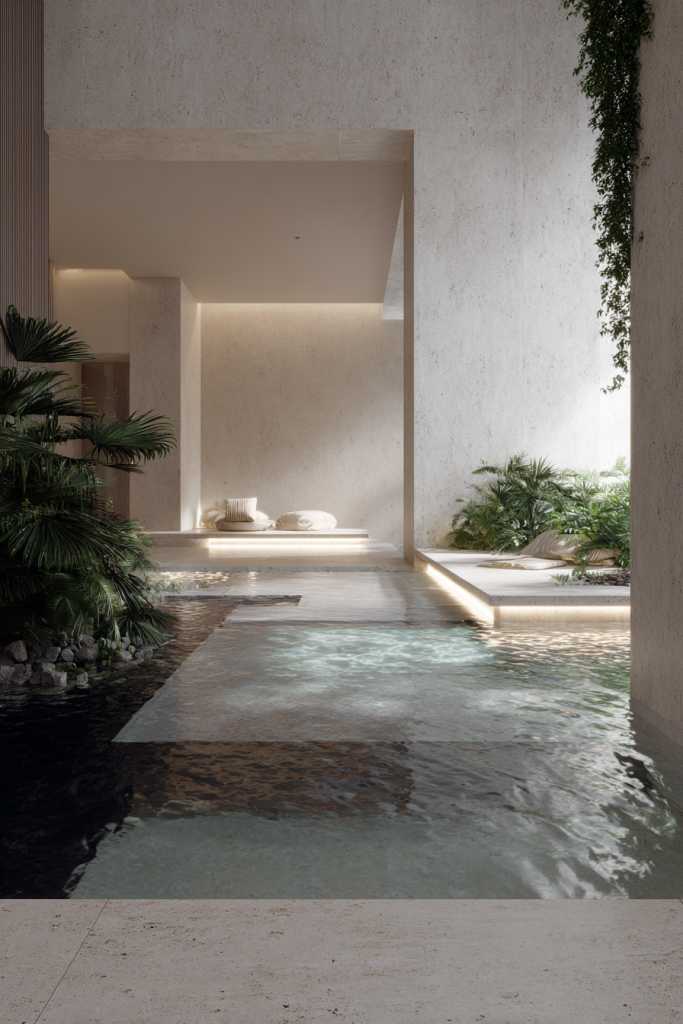
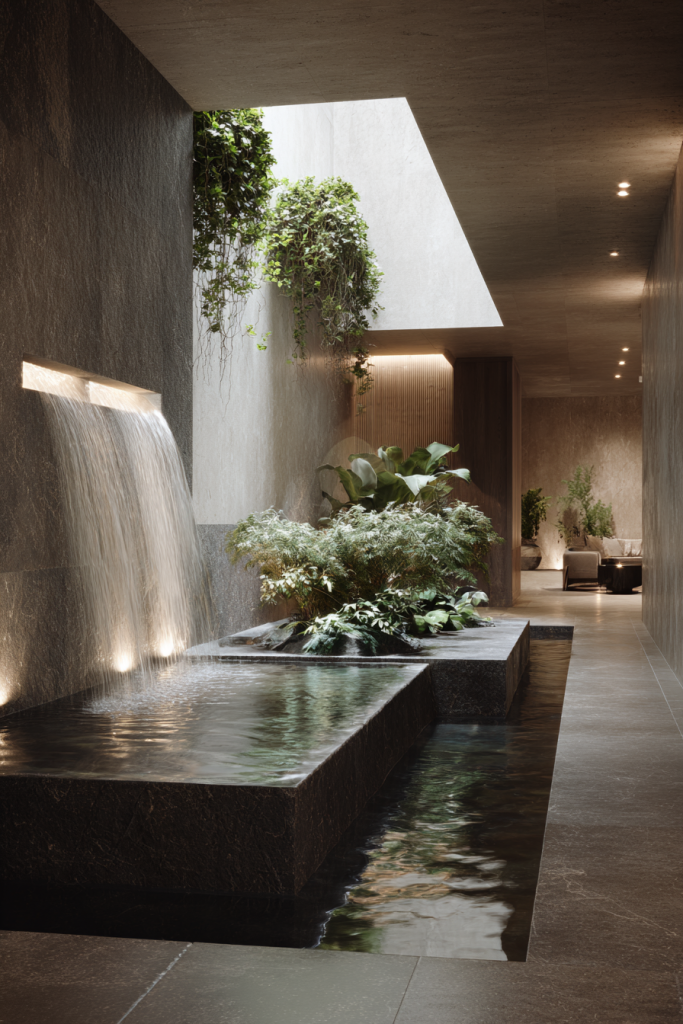
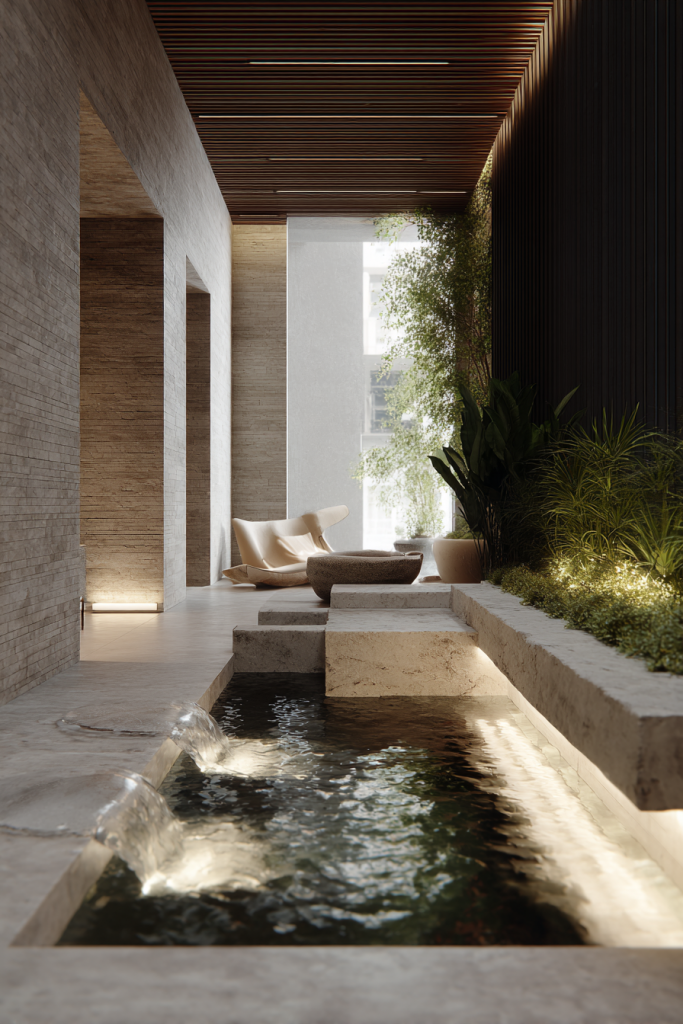
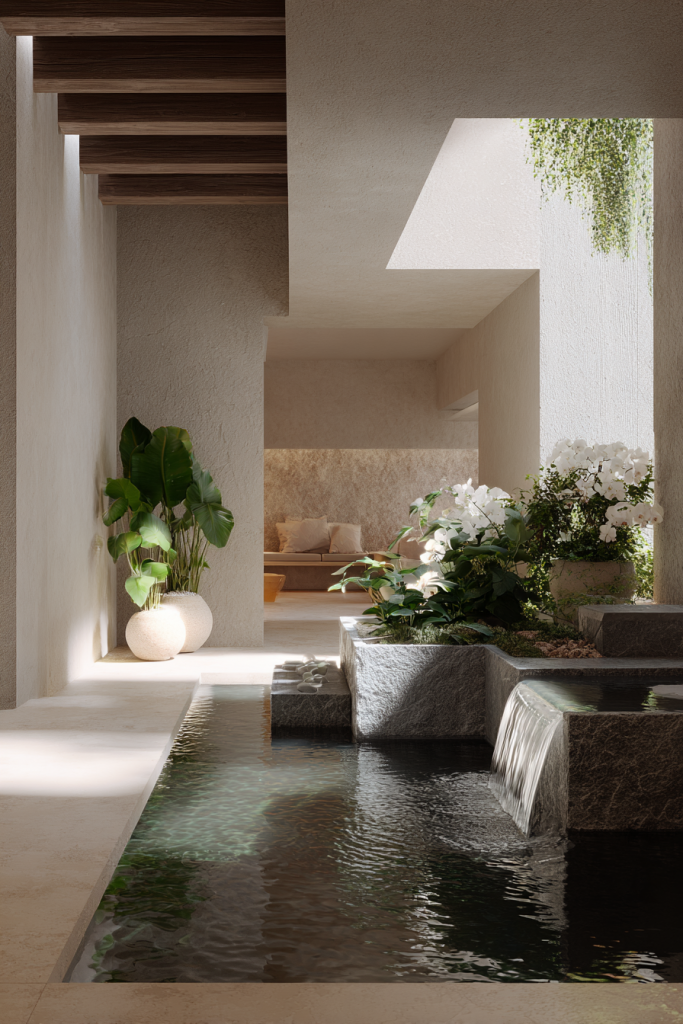
Adding natural light, plants, and water features to design makes spaces better. It promotes a healthier and more sustainable lifestyle.
How to Incorporate Biophilic Design in Your Home
As we move more into cities, making our homes more natural is key for our health. Biophilic design blends our built spaces with nature. This brings the outdoors inside, making our homes better and healthier.
Living Walls and Vertical Gardens
Living walls and vertical gardens are big in biophilic design. They clean the air and make spaces calm. A study found they can cut stress by up to 30%.
“The incorporation of living walls can significantly enhance the aesthetic appeal of a room while promoting a healthier indoor environment.” – Expert in Biophilic Design
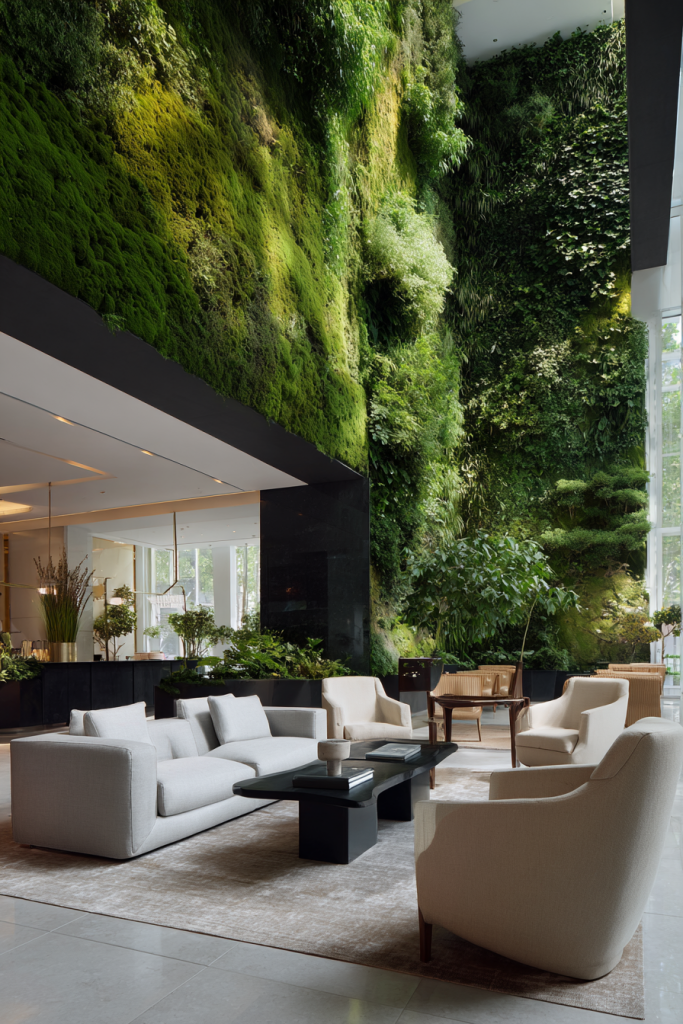
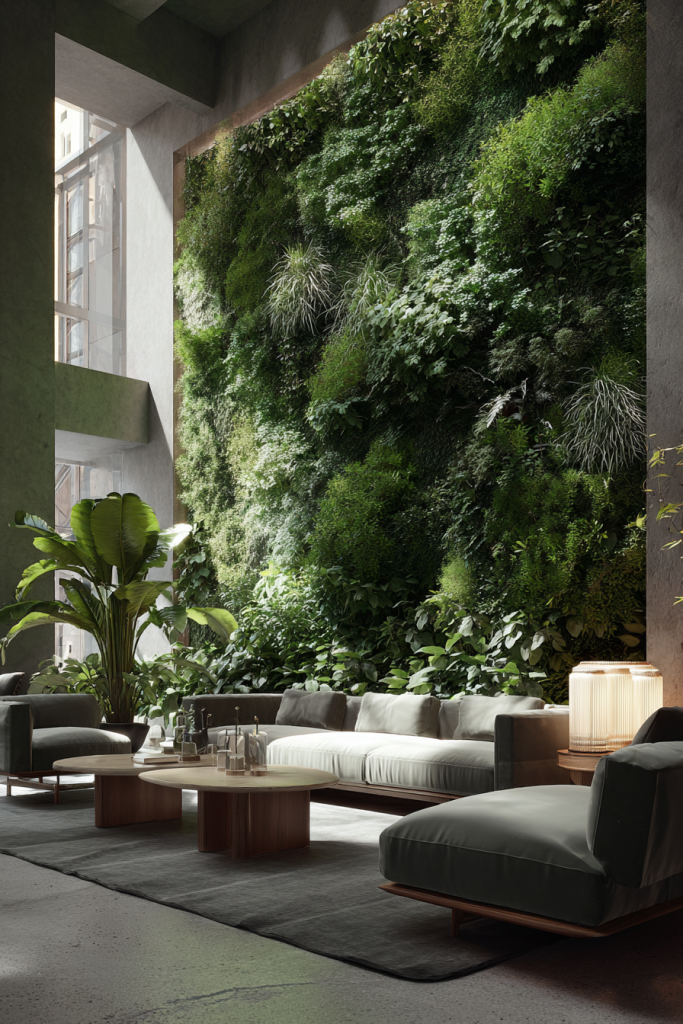
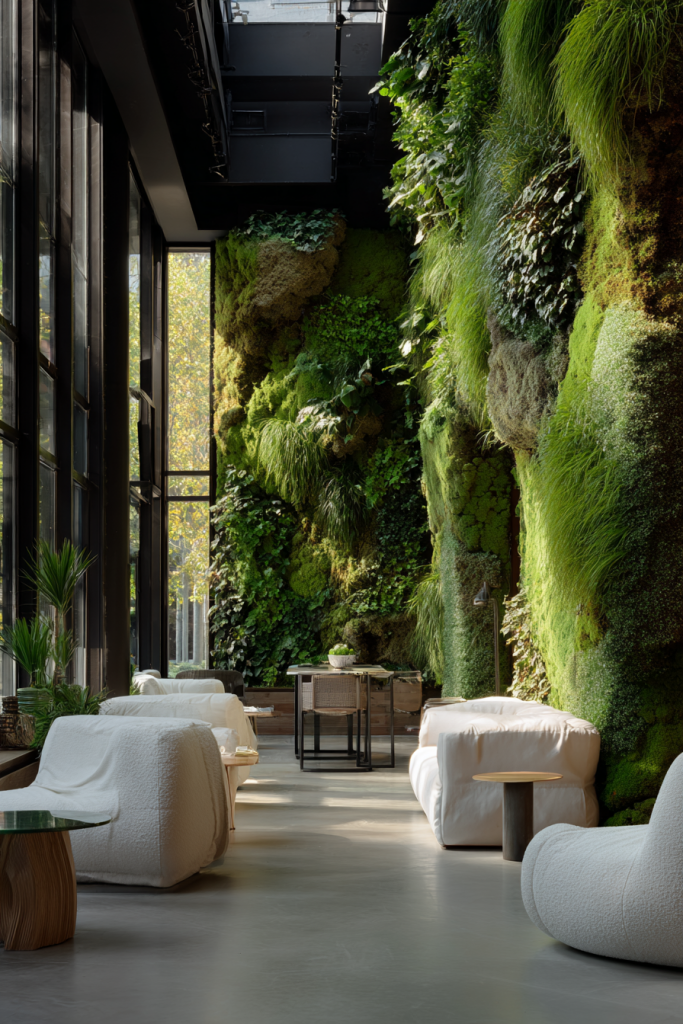
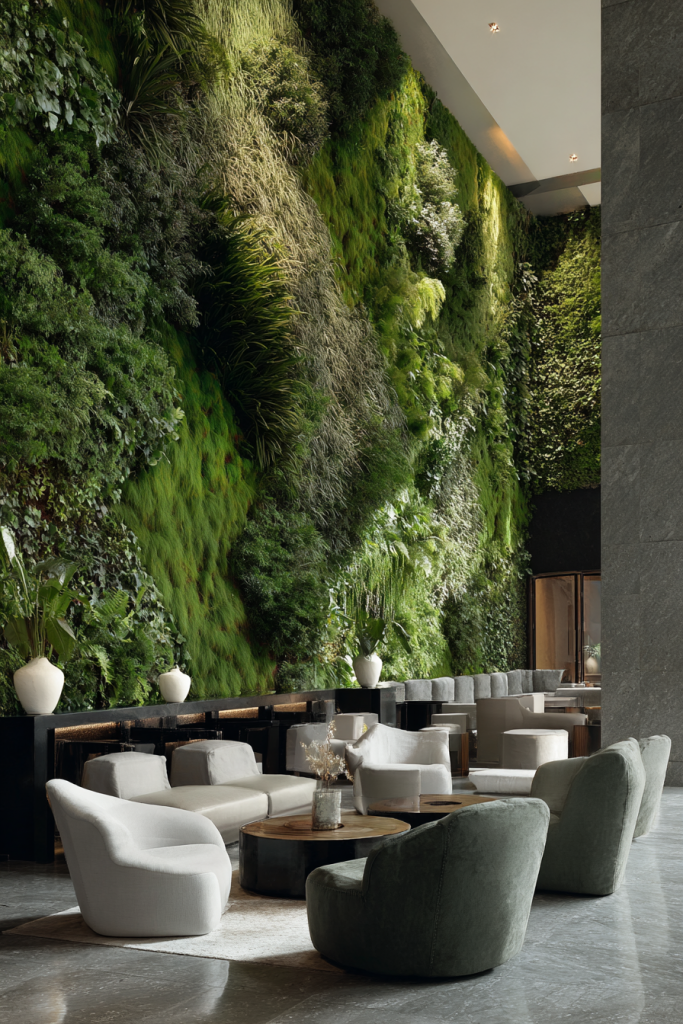
Natural Materials: Wood, Stone, and Textiles
Using wood, stone, and natural fabrics is another great way to add biophilic design. These materials warm up your space, making it feel cozy. For example, old wood can be used for floors or furniture, and stone for countertops or walls.
- Reclaimed wood for flooring and furniture
- Stone for countertops and feature walls
- Natural textiles for upholstery and decor
Views and Vistas
Connecting your indoor space to the outdoors is vital in biophilic design. Big windows, sliding doors, and mirrors help achieve this. They make your space feel more connected to nature, boosting your well-being.
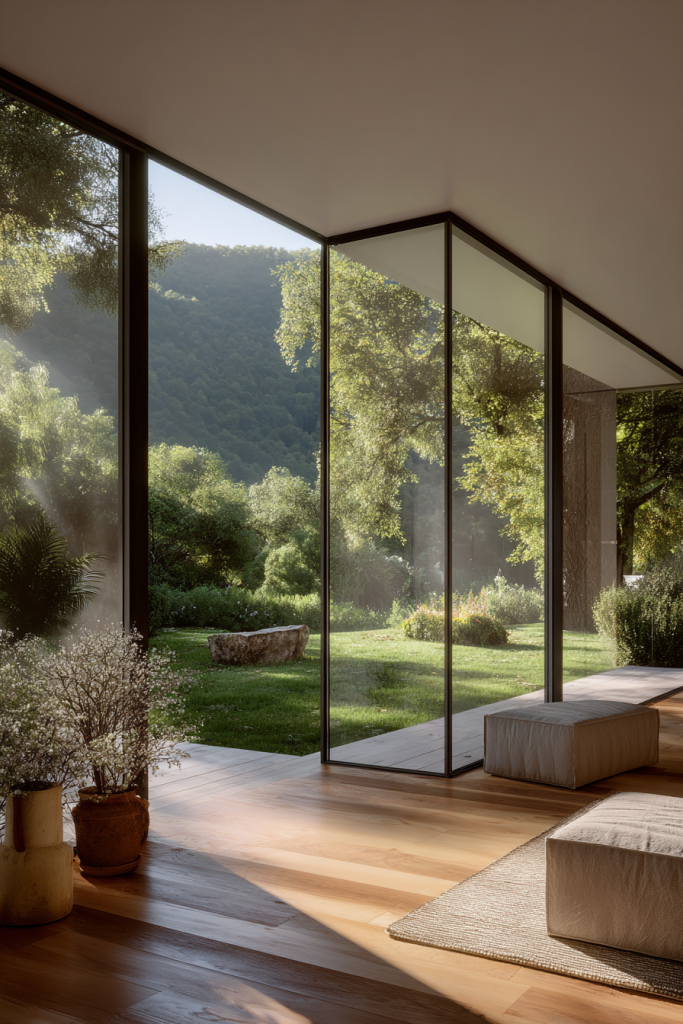
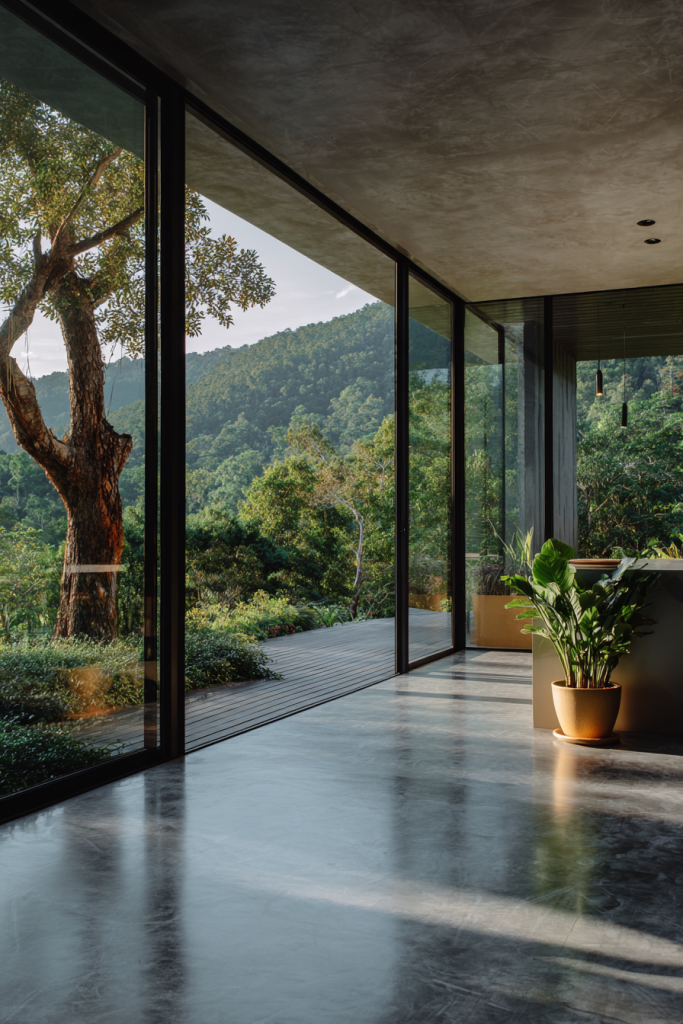
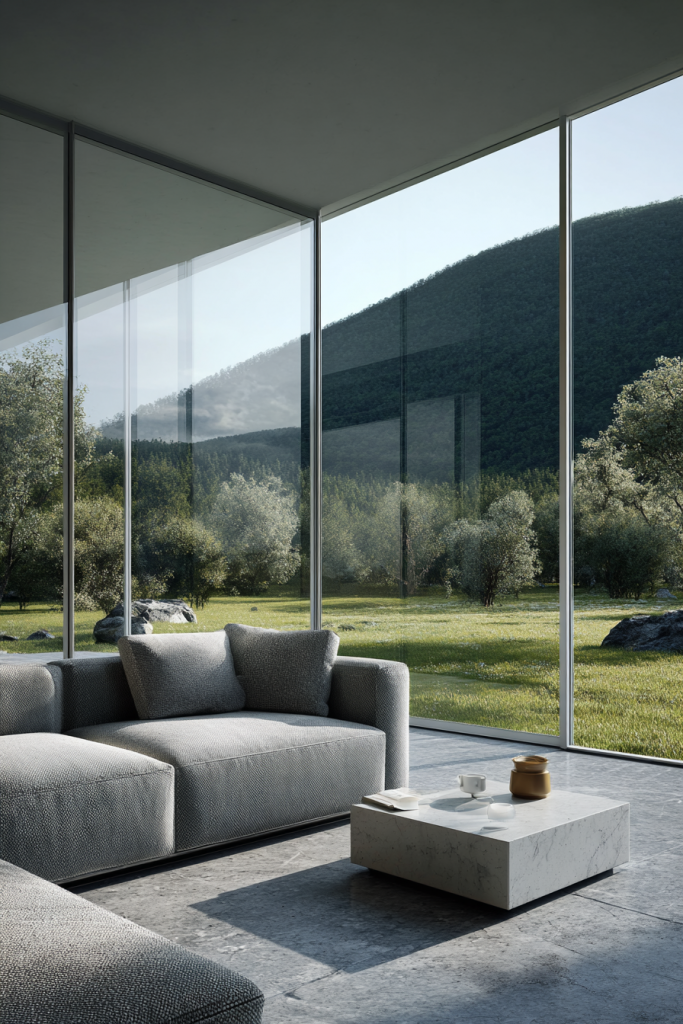
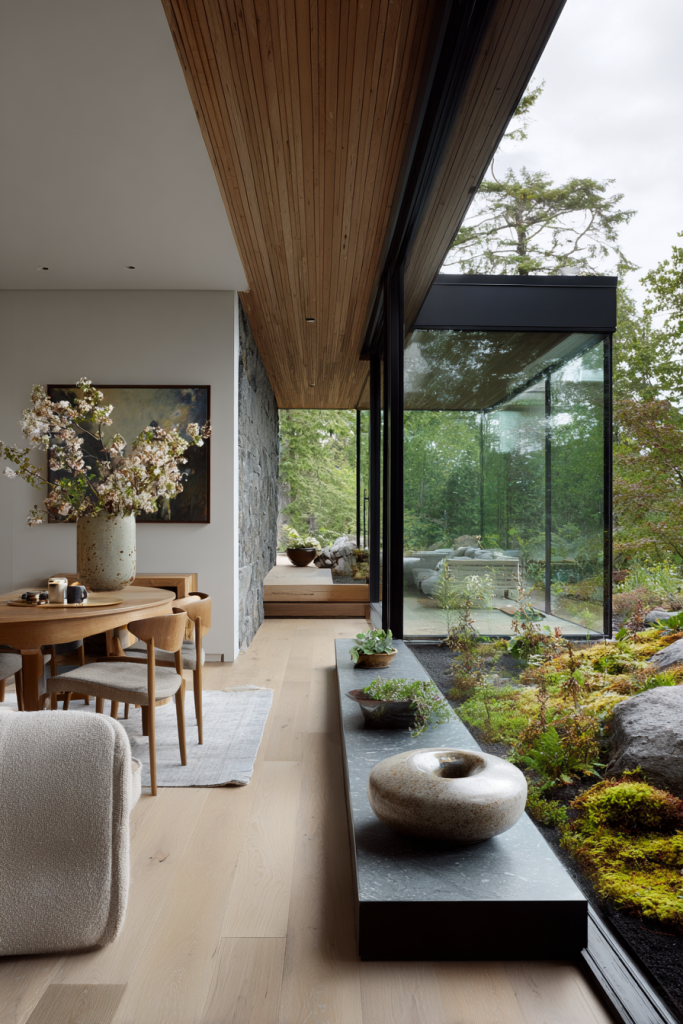
“Nature is not a place, it’s a state of mind. By bringing the outdoors in, we can cultivate a deeper connection with nature and improve our mental health.”
Adding biophilic design to your home is good for you and increases your home’s value. With living walls, natural materials, and views to nature, you create a peaceful and sustainable home.
Biophilic Design in Commercial Spaces
Commercial spaces are now using biophilic design to make environments healthier and more productive. This approach adds natural elements to buildings, improving the health of those who work or visit there.
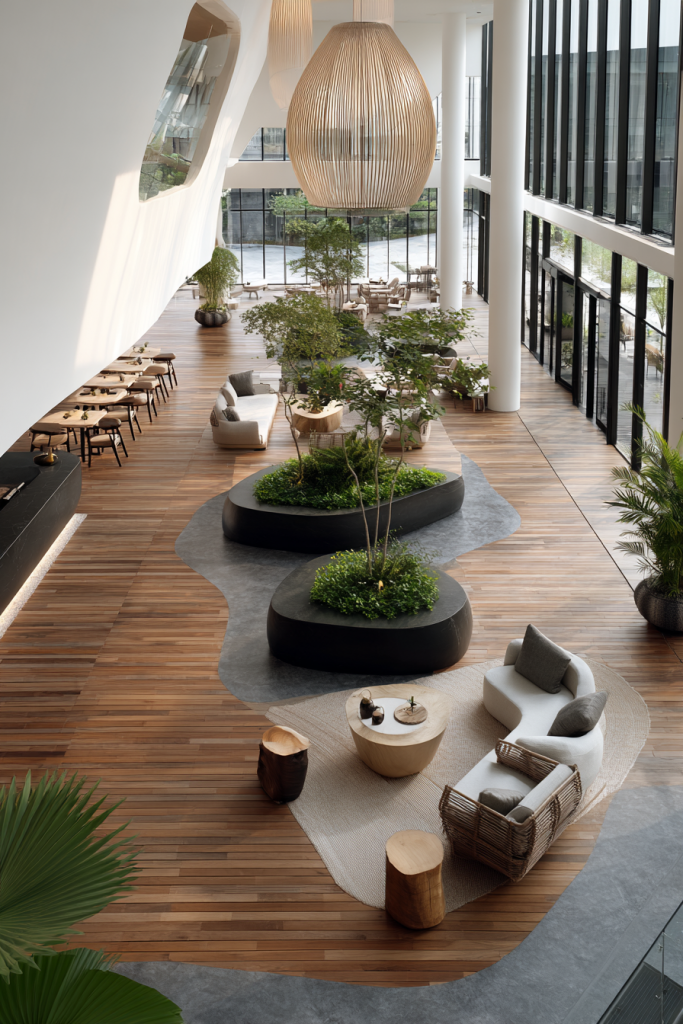
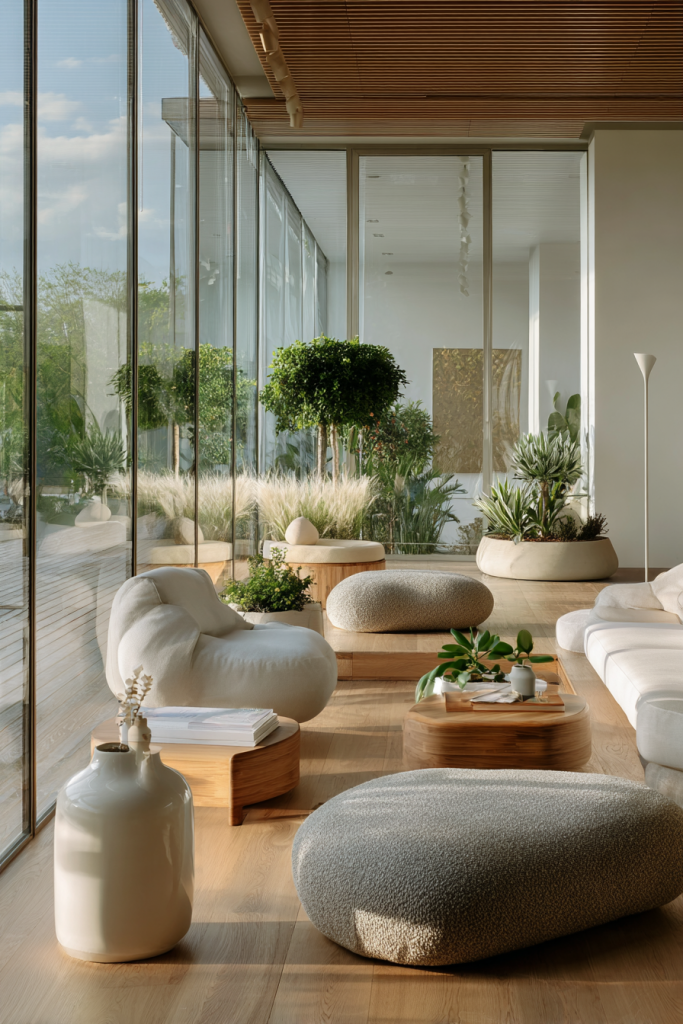
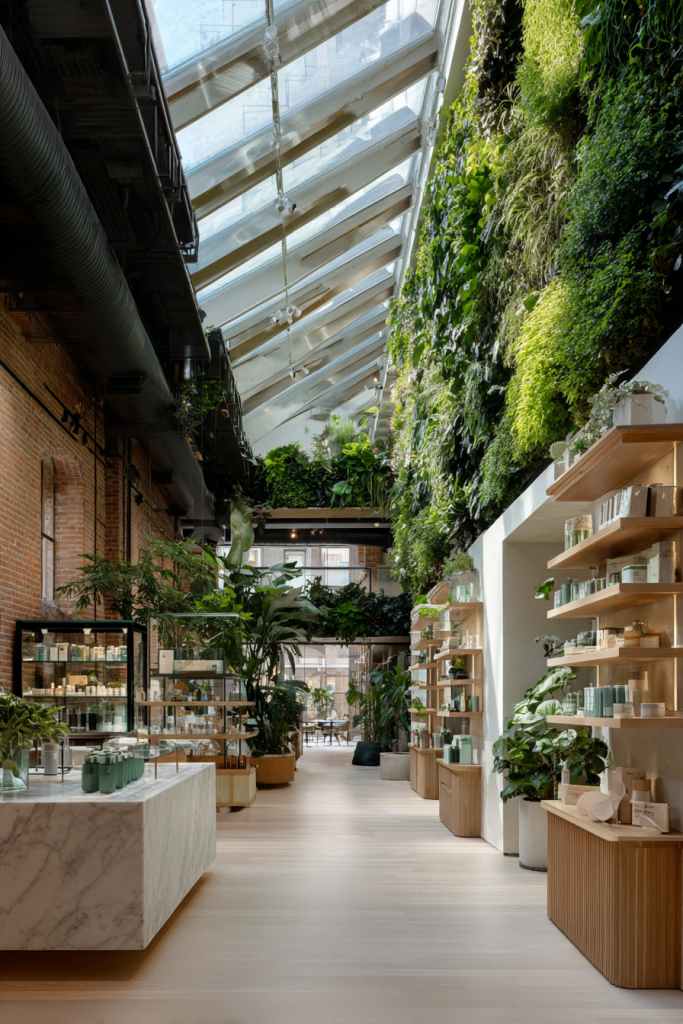
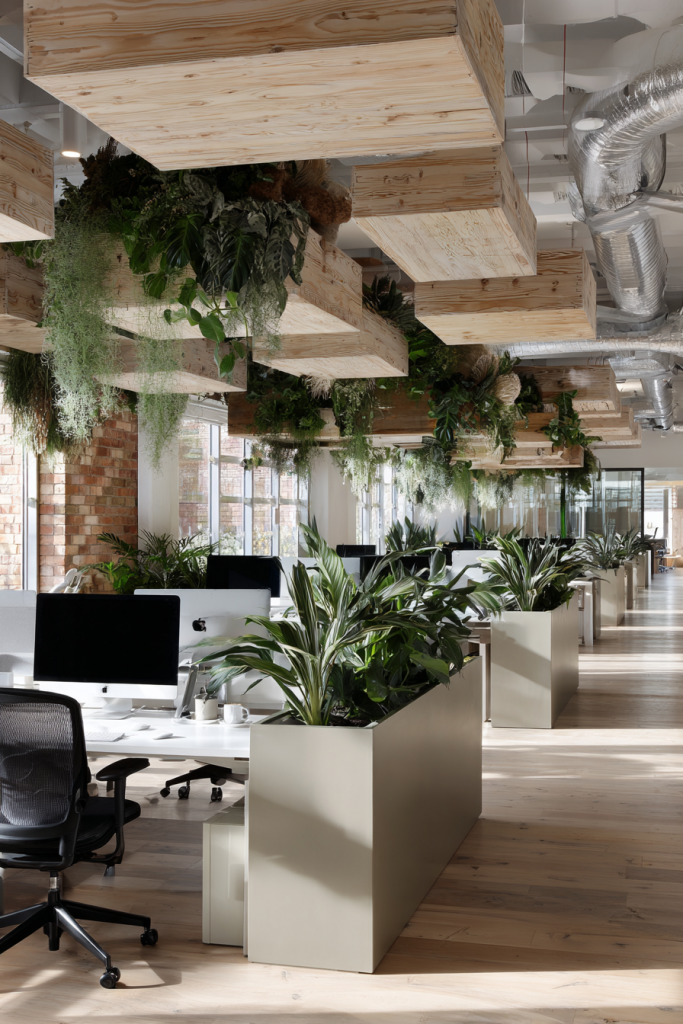
Biophilic design is changing commercial spaces, like offices and stores. Adding natural light, plants, and water features makes these places more welcoming and engaging.
Office Environments
In offices, biophilic design boosts productivity and well-being. Research shows that employees in such spaces feel happier and more motivated.
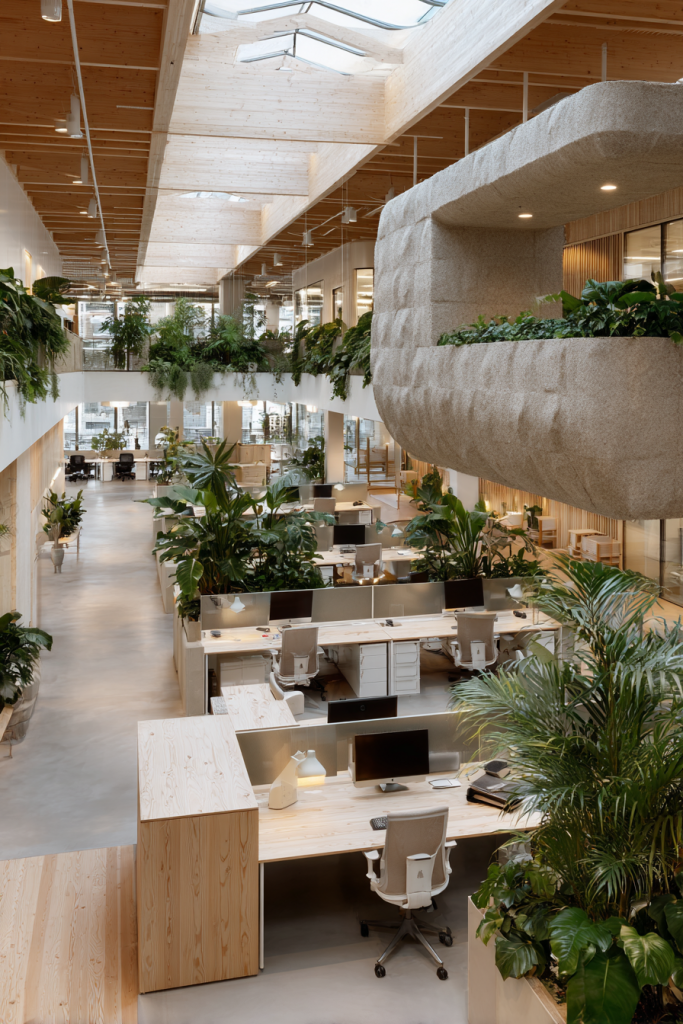
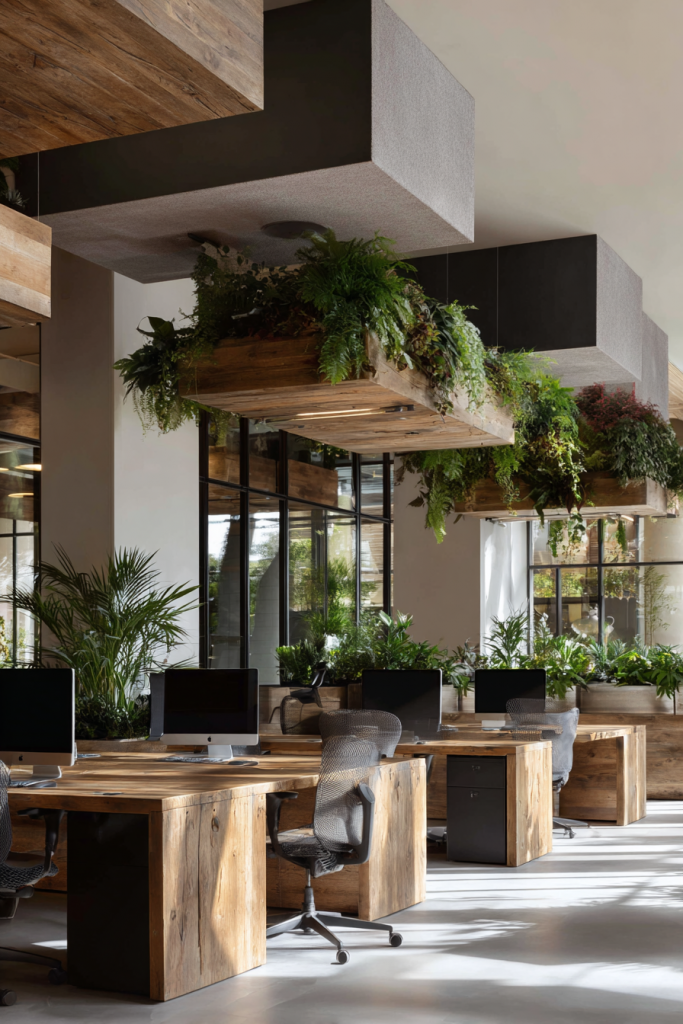
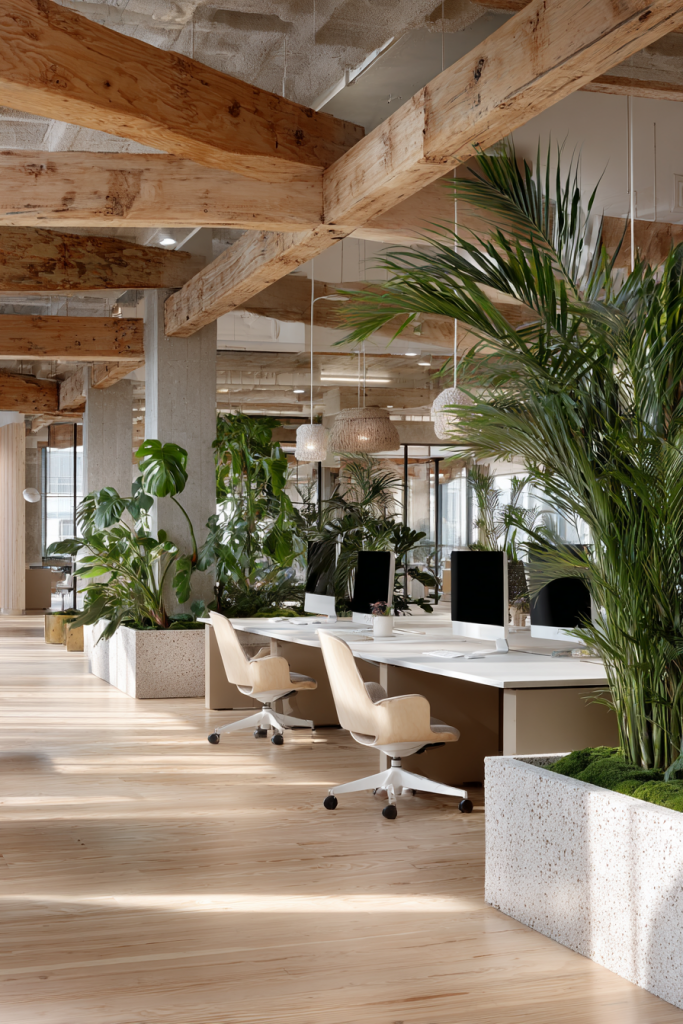
Some key elements for office biophilic design include:
- Green walls and living roofs
- Natural materials and textures
- Maximizing natural light
Retail Settings
In stores, biophilic design makes shopping more fun and inviting. Natural elements help create a cozy atmosphere, encouraging customers to stay longer.
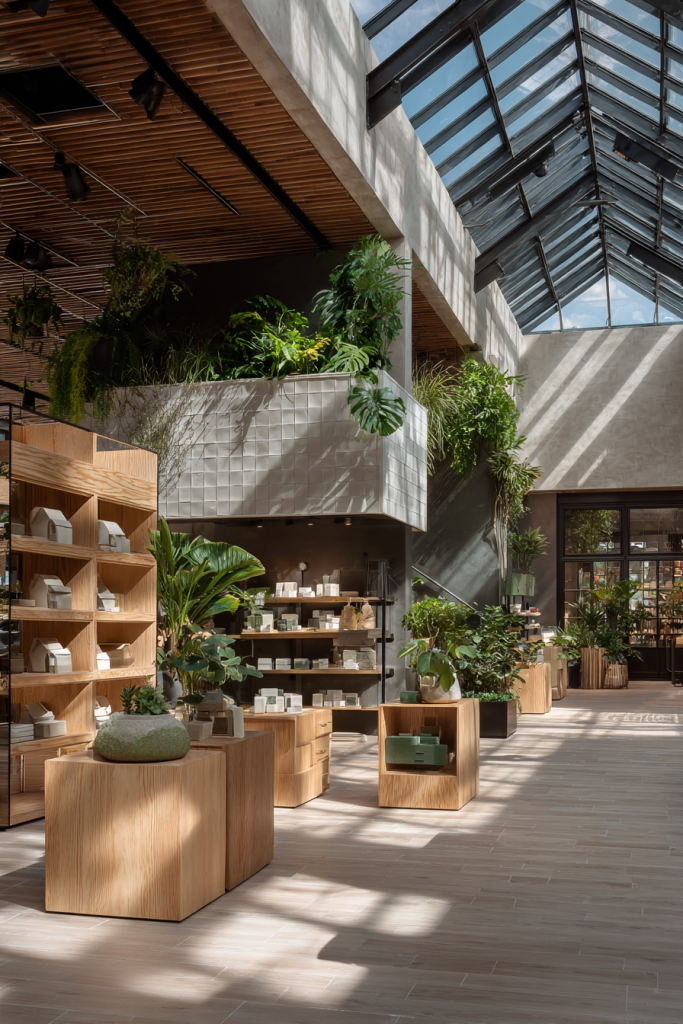
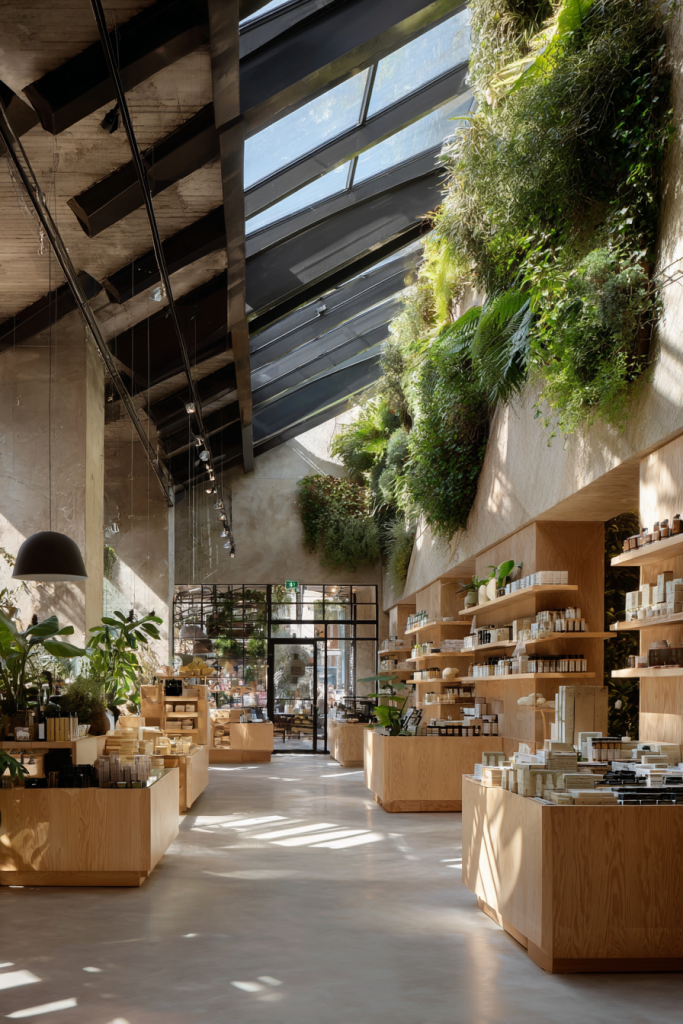
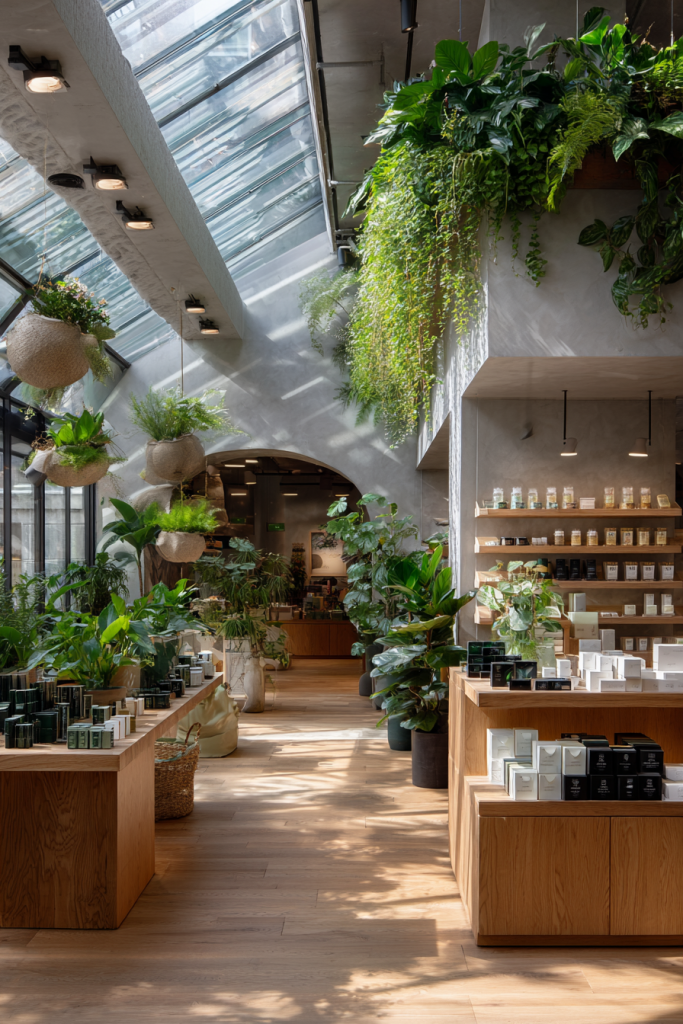
| Biophilic Element | Office Environments | Retail Settings |
|---|---|---|
| Natural Light | Boosts employee productivity | Enhances customer experience |
| Indoor Plants | Improves air quality | Creates a welcoming atmosphere |
| Water Features | Reduces stress levels | Adds visual appeal |
Understanding biophilic design’s benefits in commercial spaces helps businesses choose the right elements for their spaces.
Practical Tips for Implementing Biophilic Design
Biophilic design is more than just adding plants. It’s about making a peaceful connection between nature and your home. To make biophilic design work, think about these key elements.
Choosing the Right Plants
Picking the right plants is key for a great biophilic design. Choose plants that match your space’s light and humidity. Also, think about how well they clean the air and where to put them for the best effect.
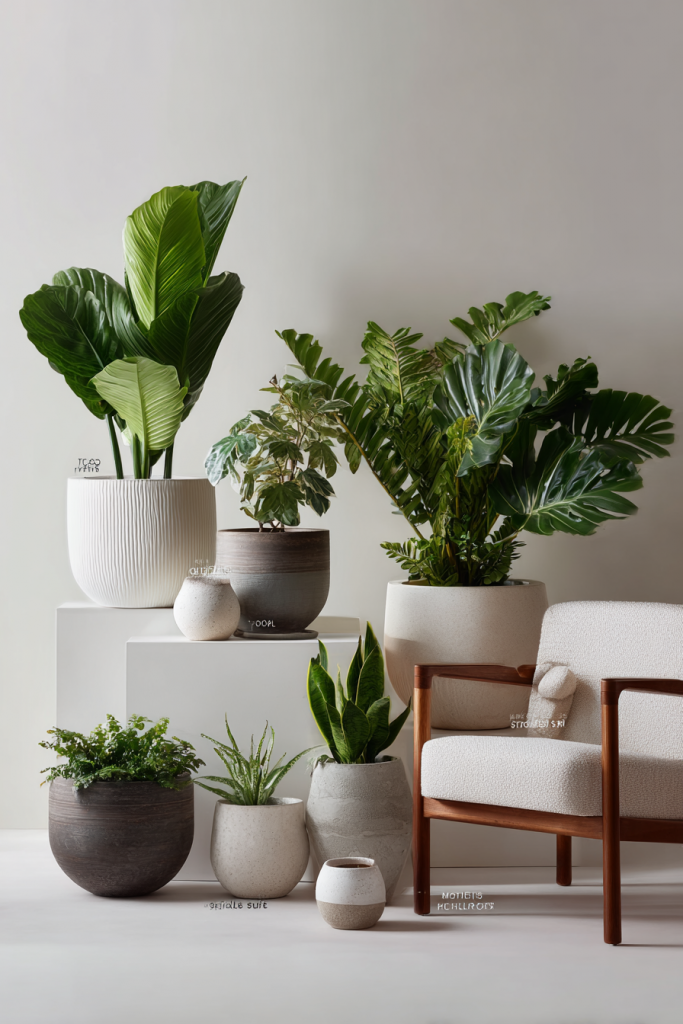
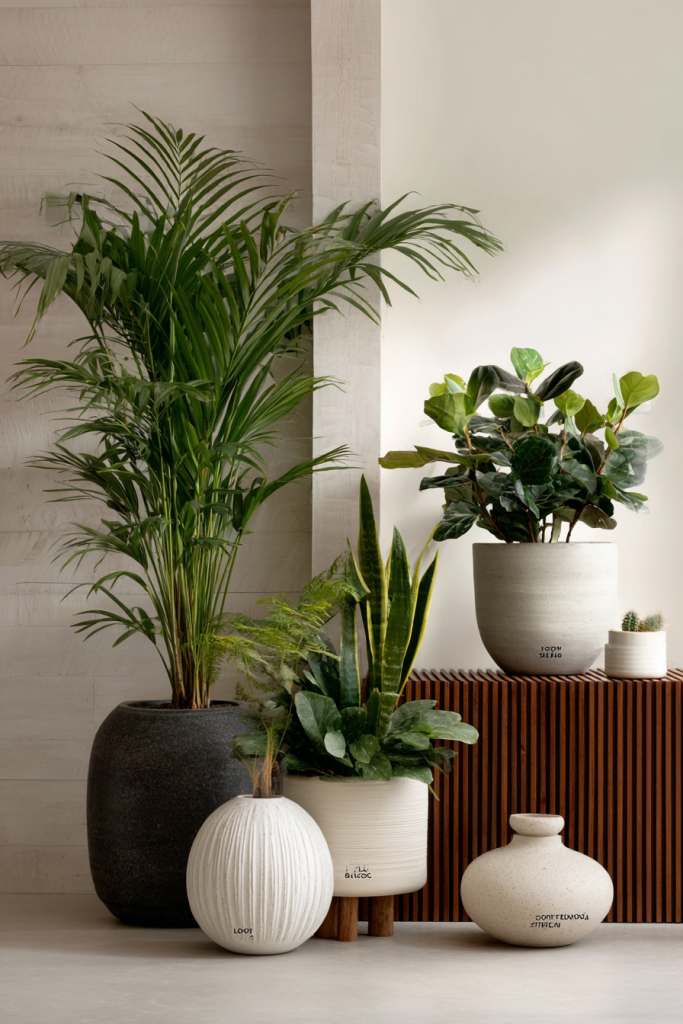
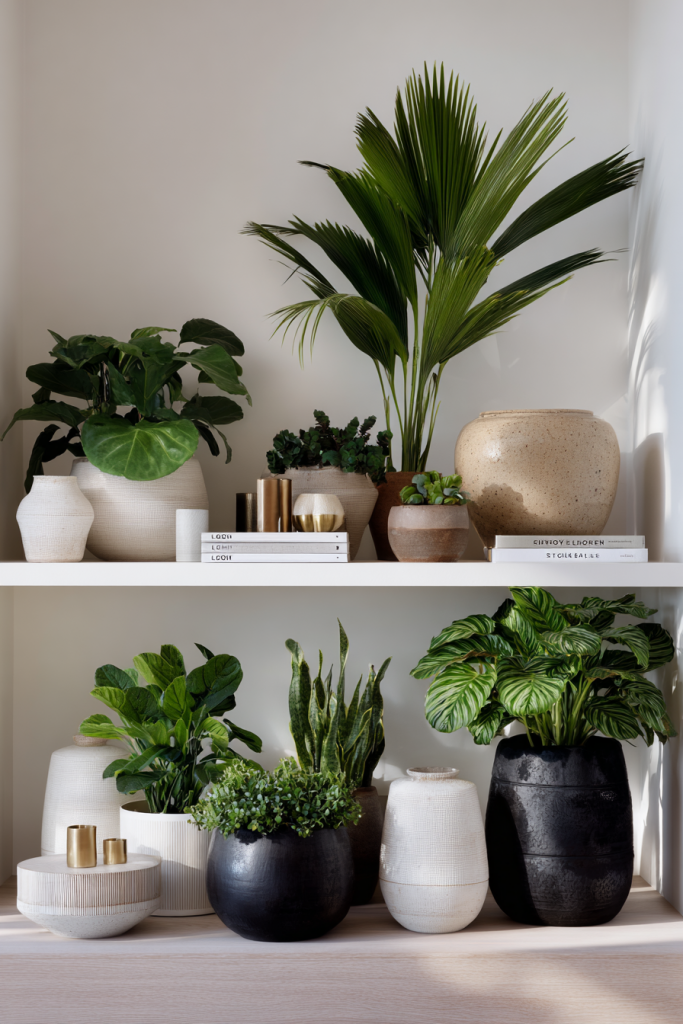
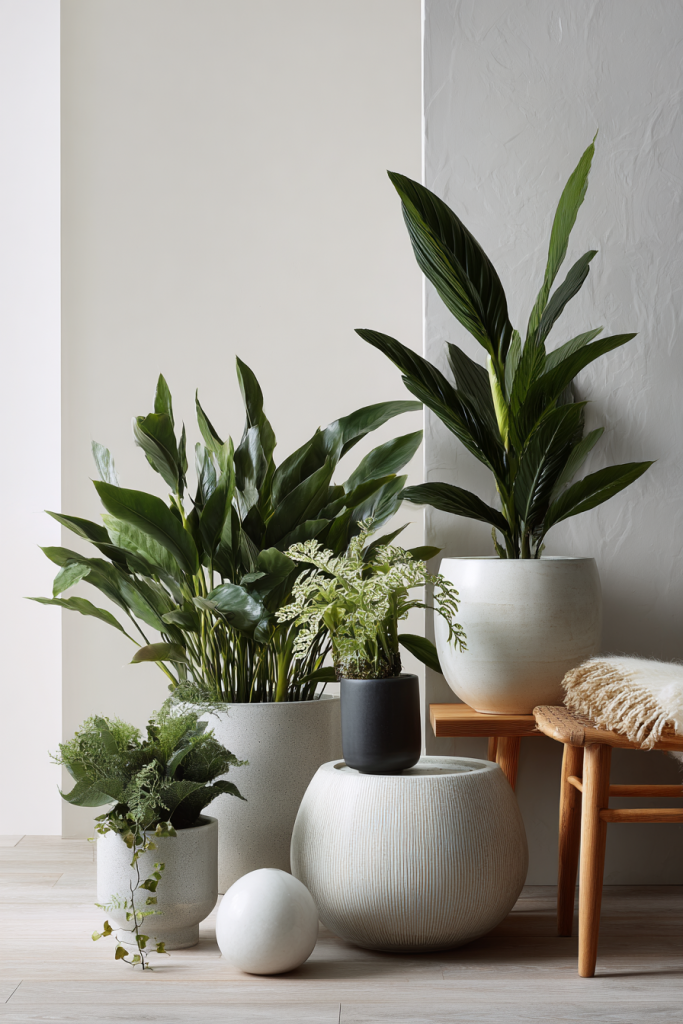
For example, plants like Snake Plants or Pothos are perfect for dark rooms. On the other hand, Succulents love bright, sunny spots. Having different plants not only looks good but also makes your home healthier.
Utilizing Open Spaces
Open spaces are vital in biophilic design. They make your home feel open and connected to the outdoors. Use open floor plans, big windows, and sliding doors to let in natural light and show off views of nature.
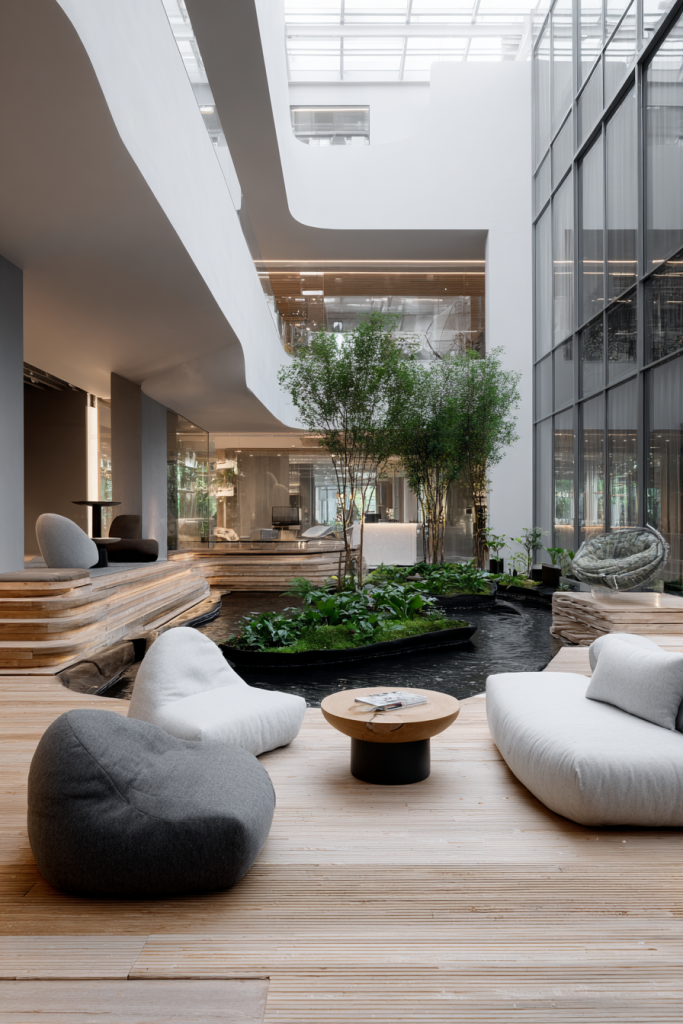
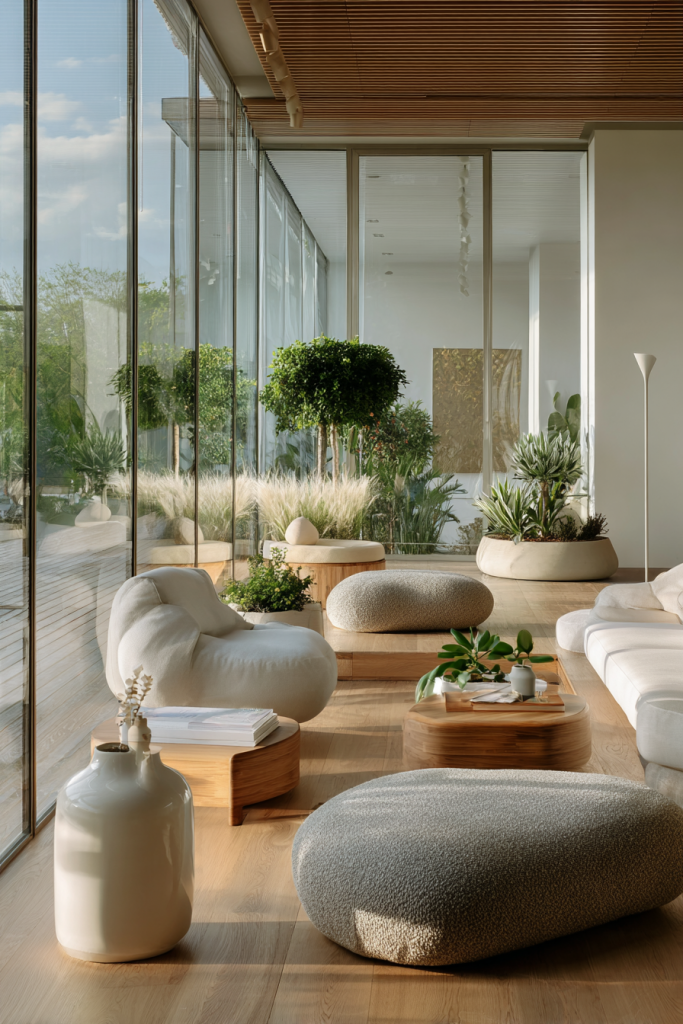
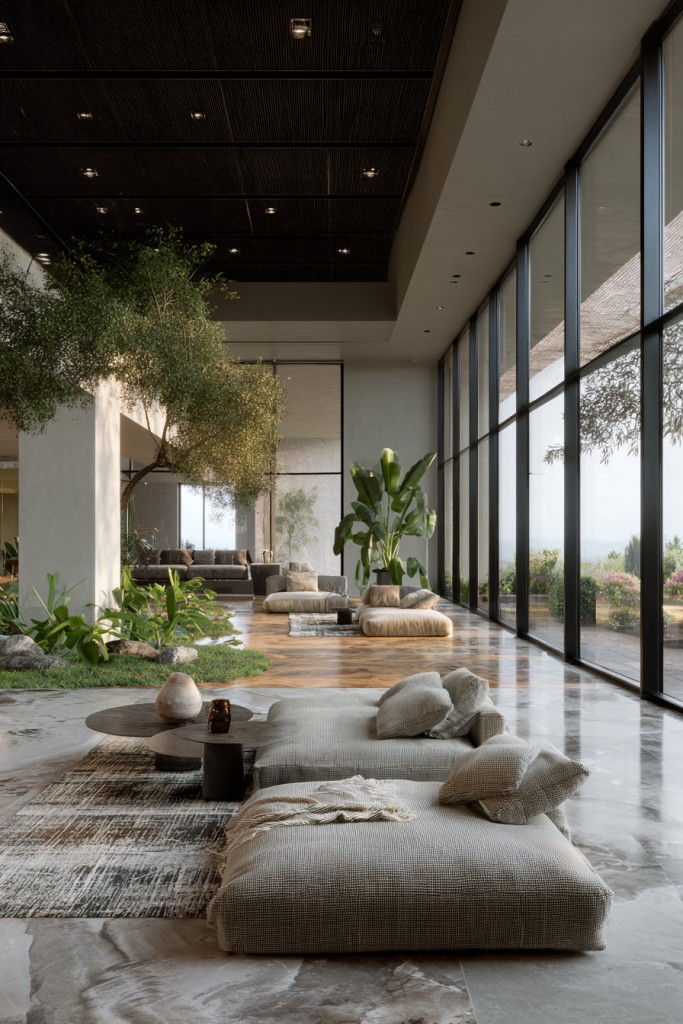
Try to include outdoor areas in your design, like patios or rooftop gardens. These areas can make your indoor and outdoor spaces feel like one, creating a seamless transition.
Color Palettes Inspired by Nature
Nature-inspired colors can really make your space feel biophilic. Use colors from nature, like greens, blues, and earthy browns, in your design.
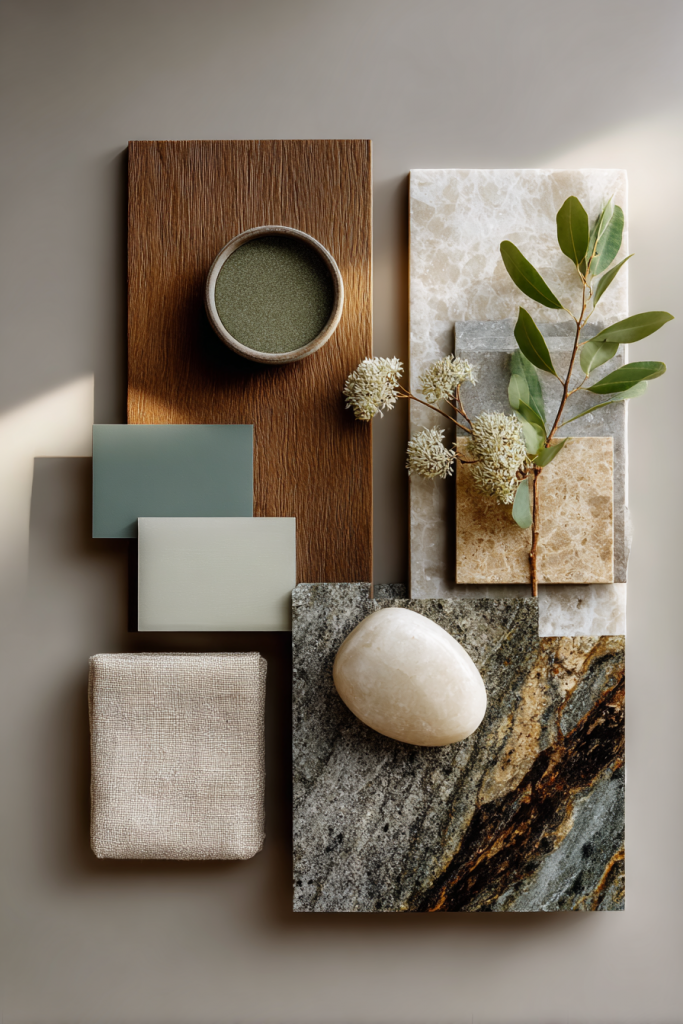
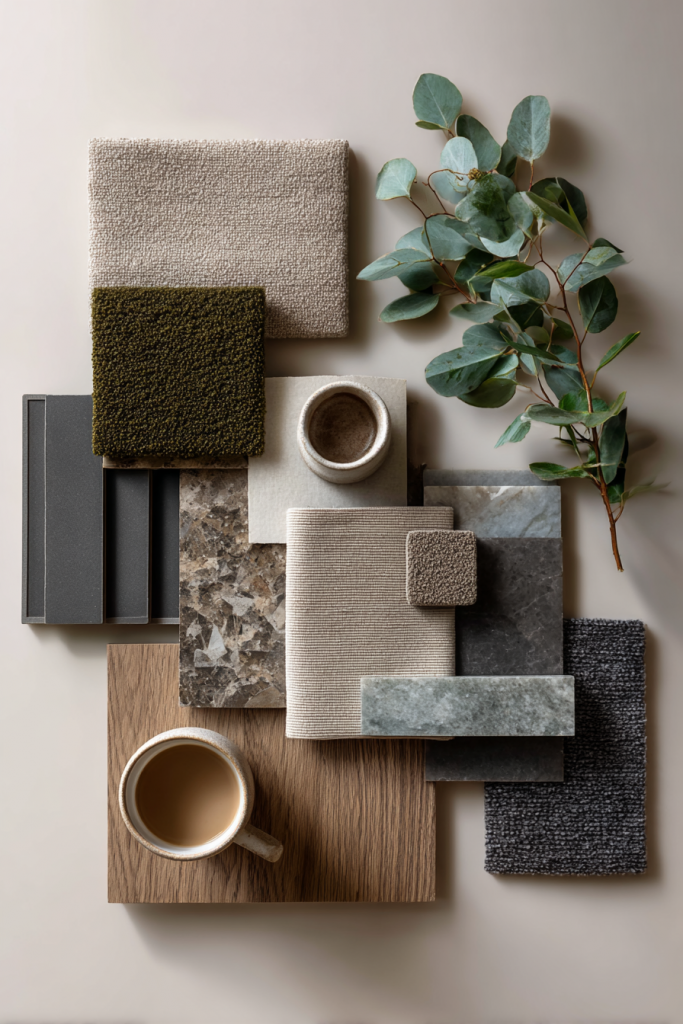
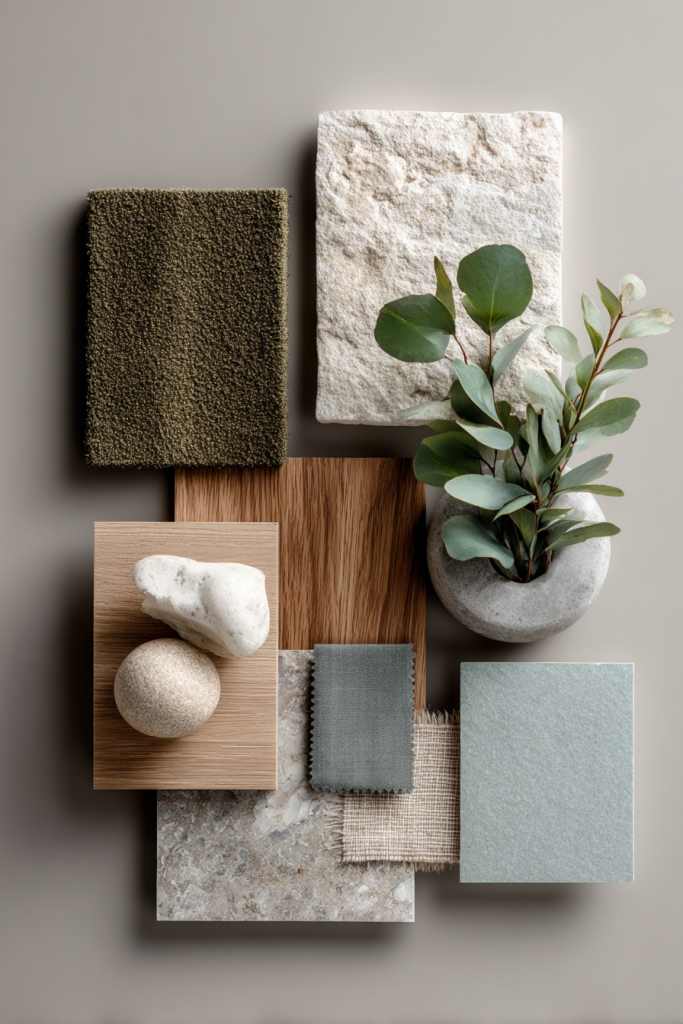
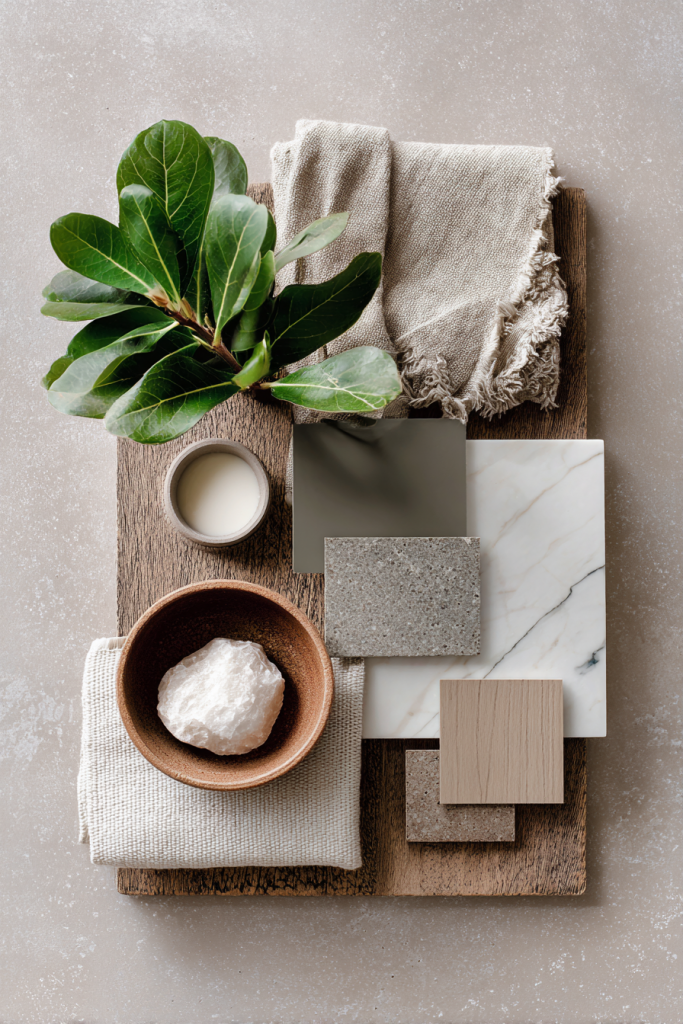
Try mixing warm and cool colors to make your space welcoming. For example, a green wall can be paired with wooden accents for a cozy, natural feel.
The Role of Technology in Biophilic Design
Technology is becoming more important in biophilic interior design. It helps us connect more with nature. It’s not just about new trends; it’s about spaces that feel more natural.
Smart Lighting Solutions
Smart lighting is a big part of this. It can change like daylight to help our bodies stay in sync. For example, light therapy lamps can help people with Seasonal Affective Disorder (SAD).
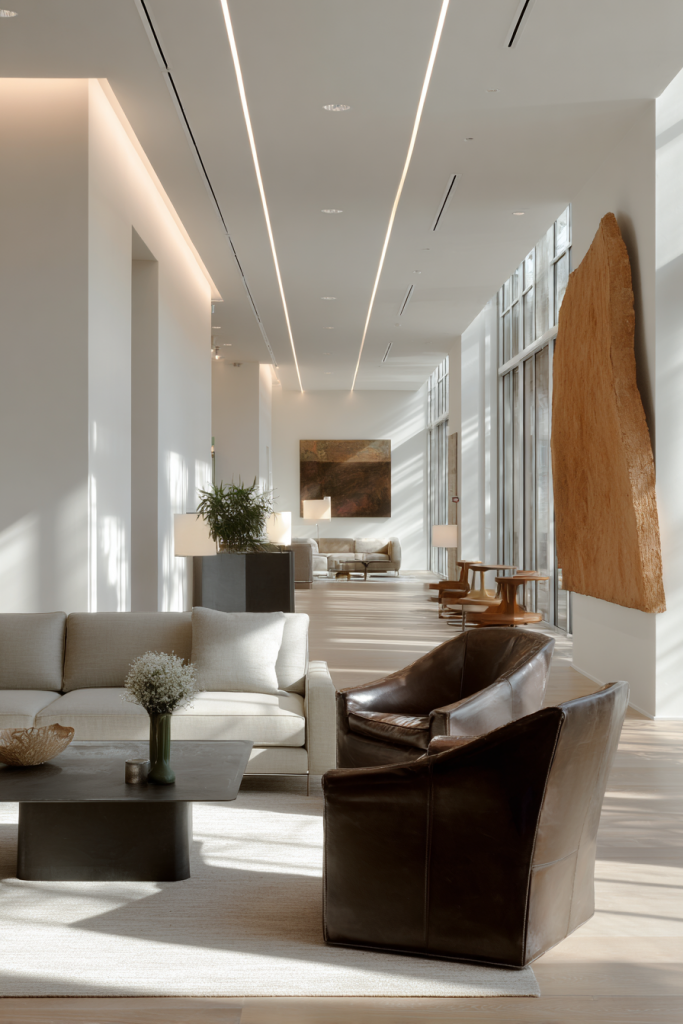
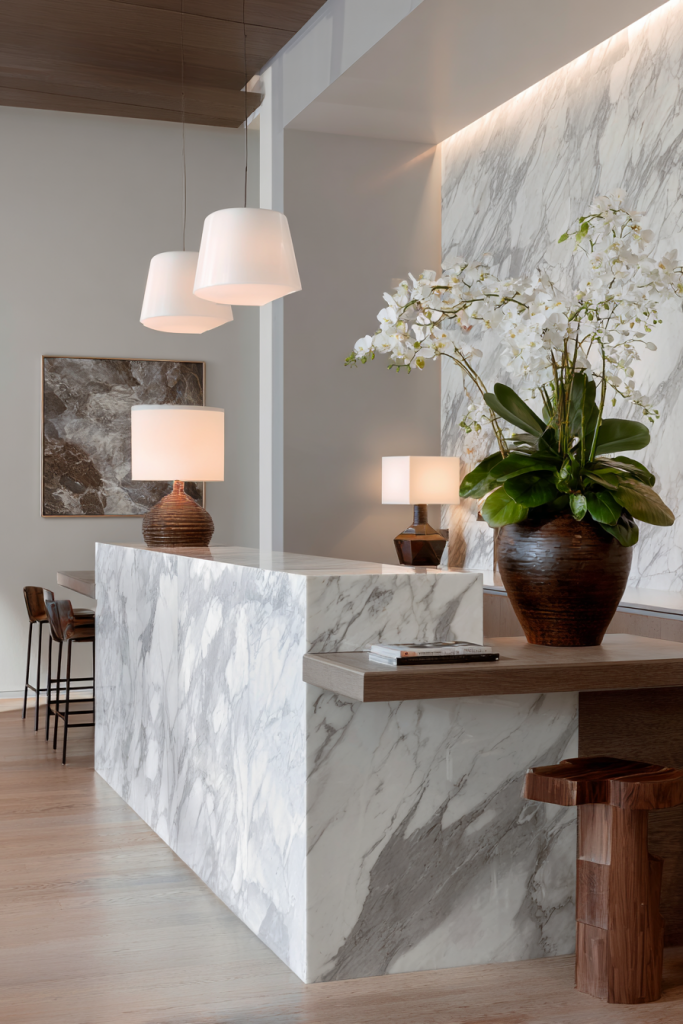
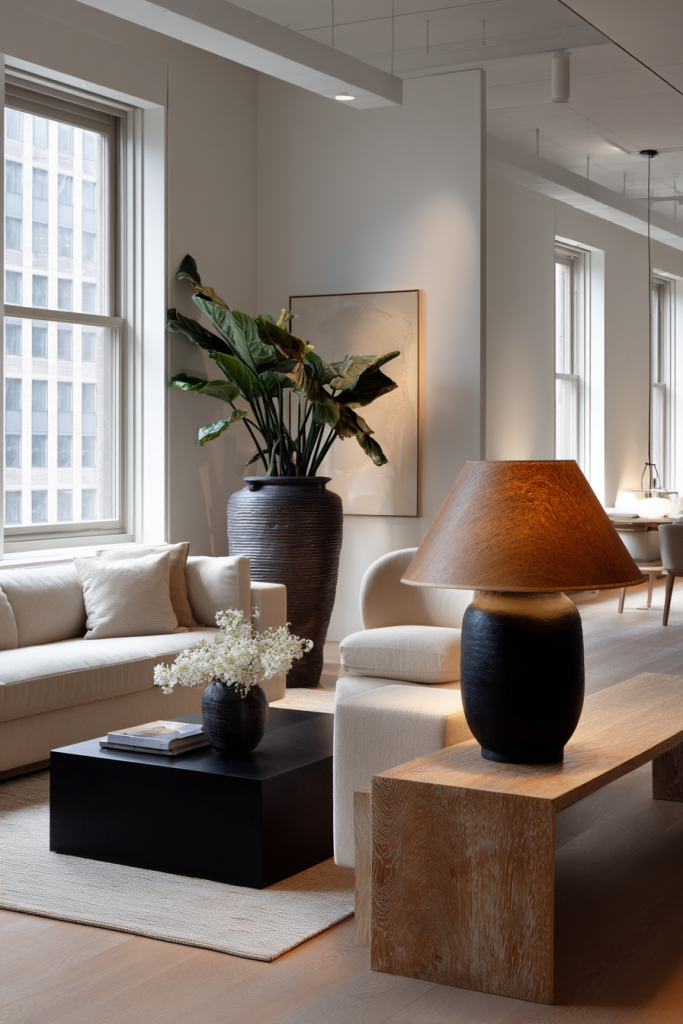
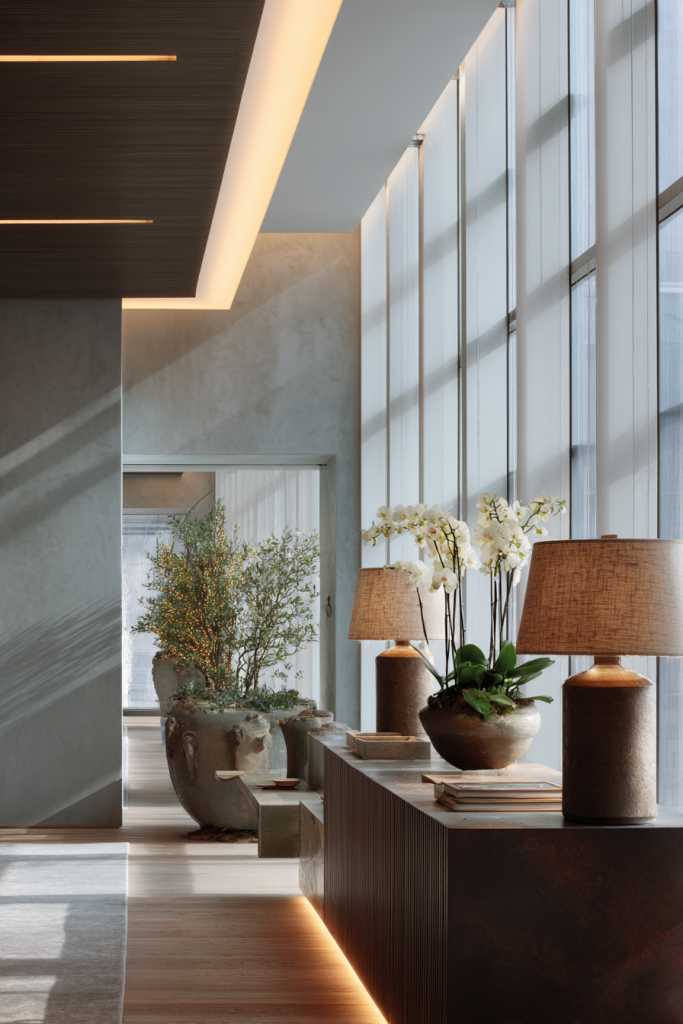
Benefits of Smart Lighting:
- Regulates circadian rhythms
- Improves mood and productivity
- Enhances overall well-being
Virtual Nature Experiences
Virtual nature experiences are also changing biophilic design. High-definition displays and immersive tech bring the outdoors inside. This is great when you can’t get natural light or views.
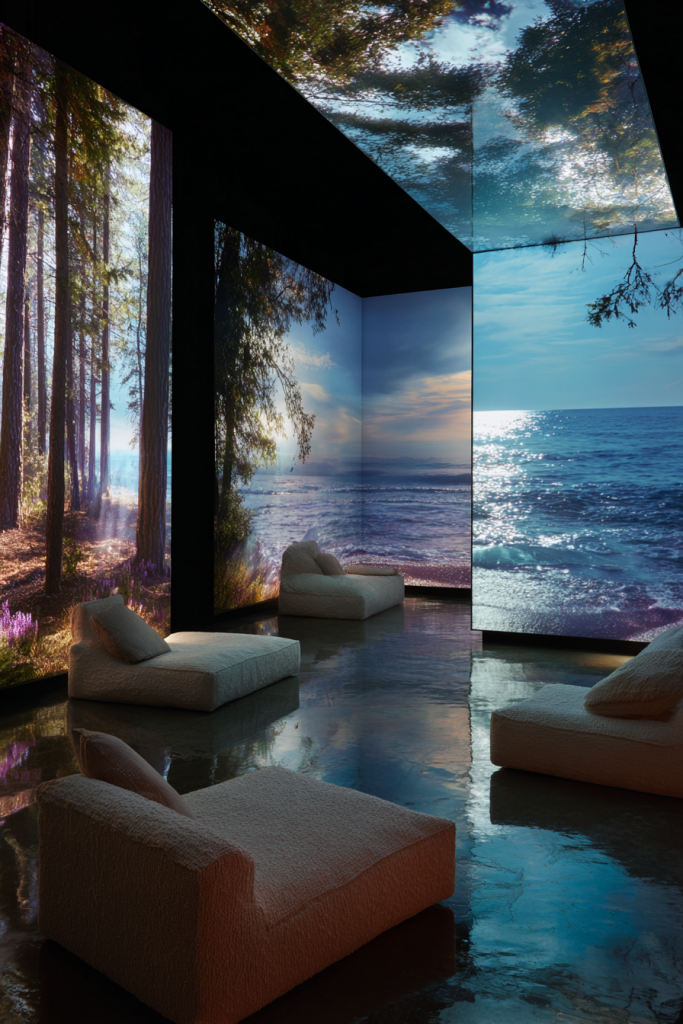
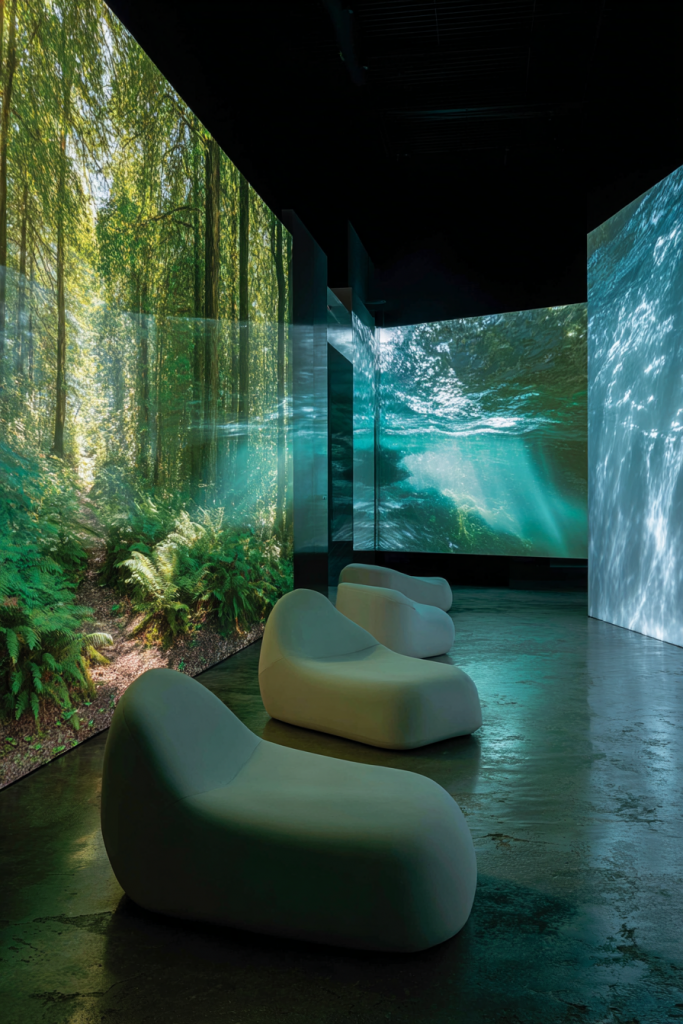
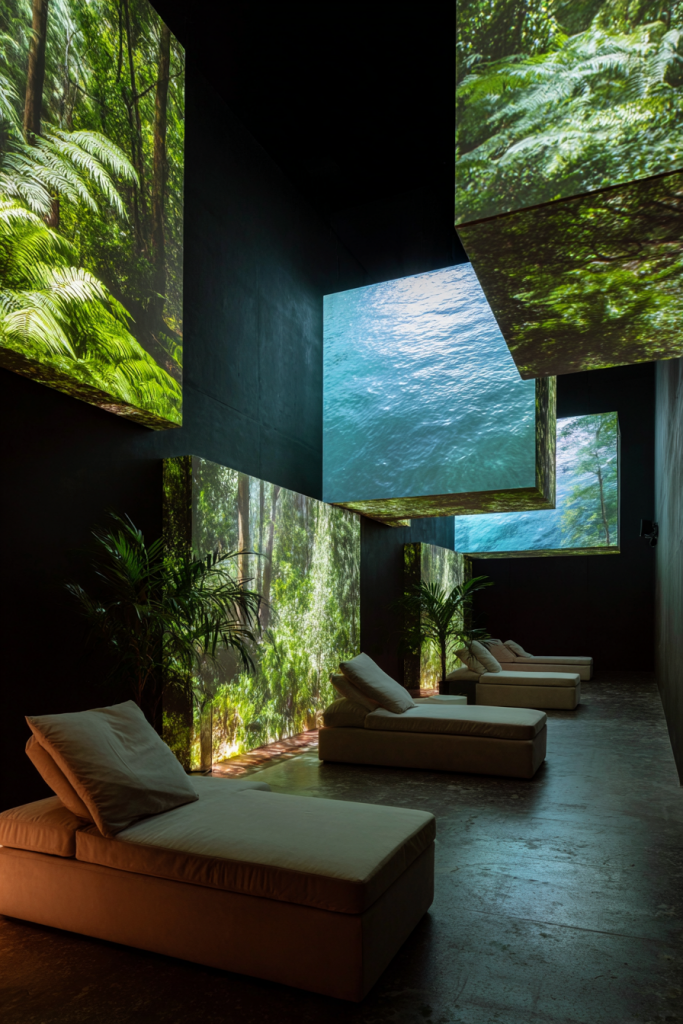
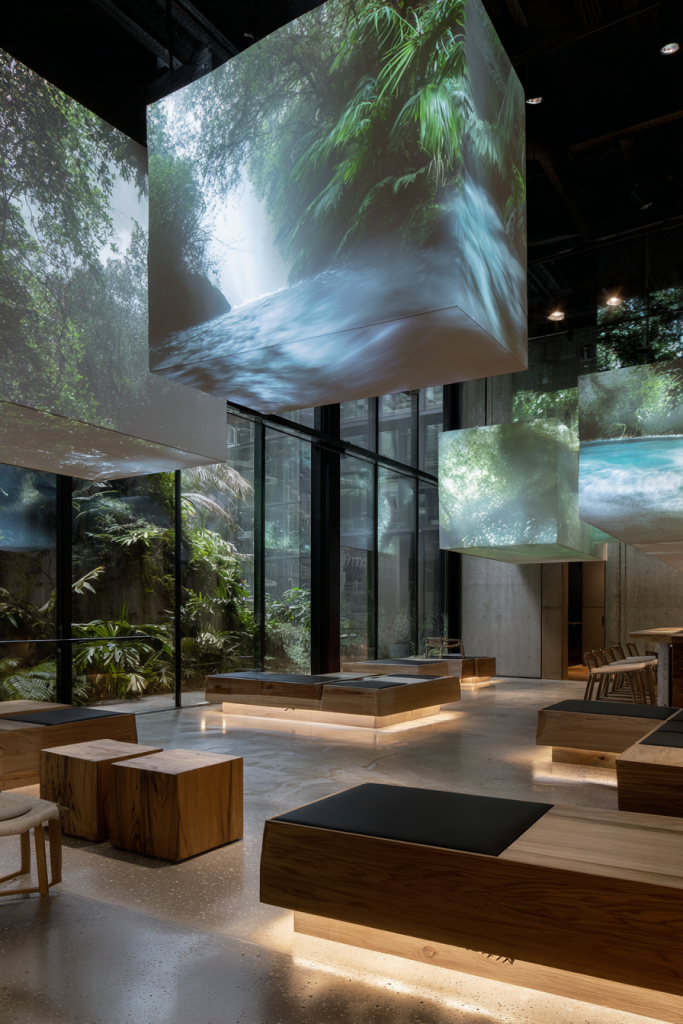
The impact of virtual nature experiences is huge. They add a new level to biophilic design.
| Technology | Application in Biophilic Design | Benefits |
|---|---|---|
| Smart Lighting | Mimics natural daylight patterns | Regulates circadian rhythms, improves mood |
| Virtual Nature Experiences | Brings outdoors into indoor spaces | Enhances well-being, compensates for lack of natural light |
By using these technologies, biophilic design can do even more. It can make us feel better and help the planet. As tech gets better, we’ll see even more cool uses in biophilic design.
Case Studies: Successful Biophilic Designs
Biophilic designs are changing how we see indoor and outdoor spaces. They use natural elements and design principles to make spaces better for our health. They also help us work better and feel less stressed.
These designs are not just for homes; offices are also getting a natural makeover. Let’s look at some examples of how biophilic design works in both homes and offices.
Residential Biophilic Designs
People want to bring nature inside, and designers are making it happen. Living walls and vertical gardens are popular. They clean the air and connect us to nature.
“The incorporation of natural elements into our homes can have a profound impact on our well-being. It’s about creating a harmonious balance between the built environment and nature.”
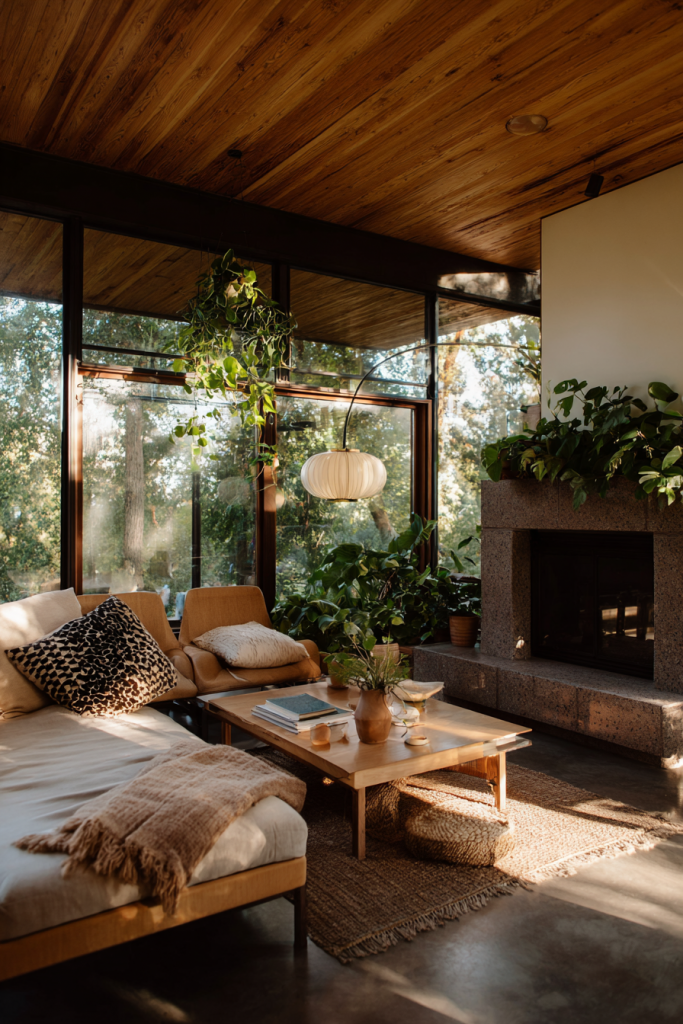
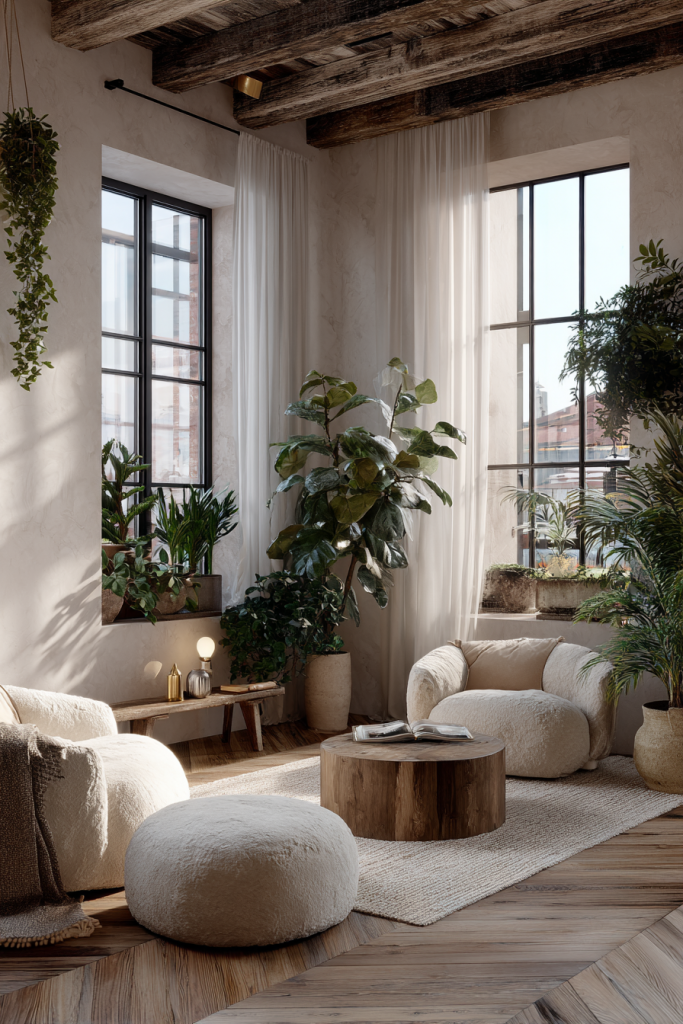
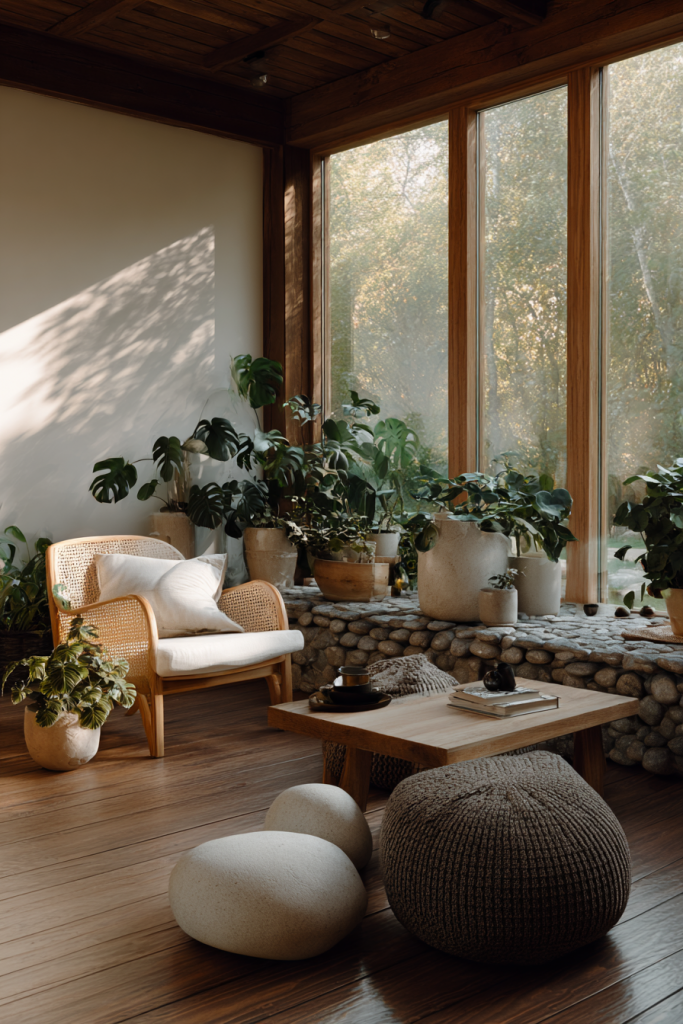
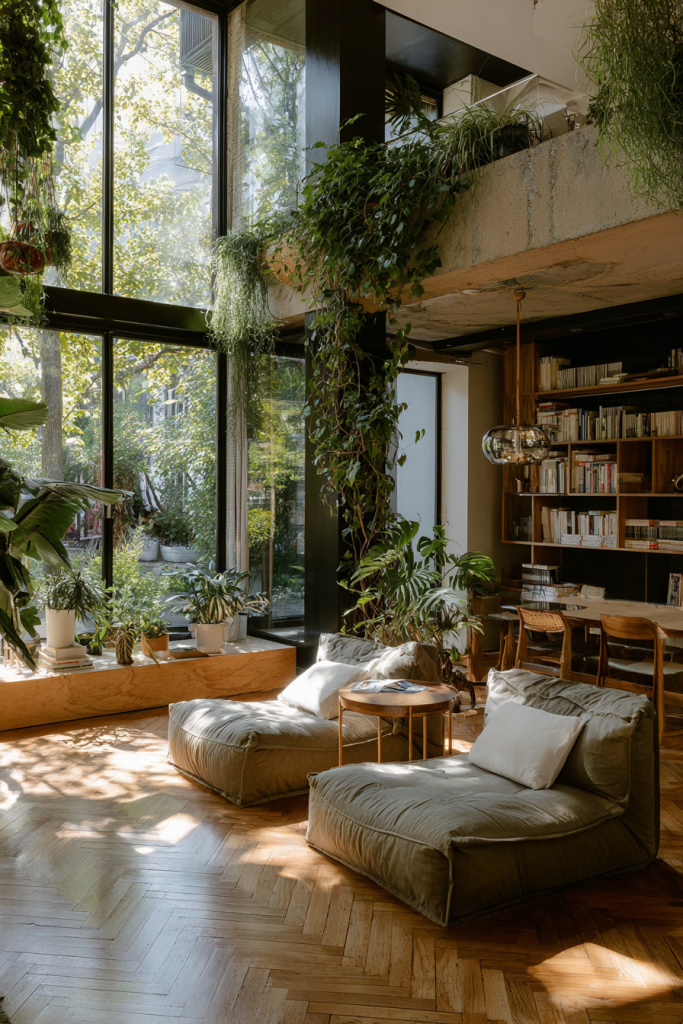
In California, a home has a huge living wall in the living room. It makes the room feel bigger and more connected to the outdoors.
Innovative Office Designs
Offices are using biophilic design to make employees happier and more productive. The Amazon Spheres in Seattle is a great example. It has over 40,000 plants from all over the world. This creates a space that encourages creativity and well-being.
| Office Design | Biophilic Elements | Benefits |
|---|---|---|
| Amazon Spheres, Seattle | Over 40,000 plants, glass domes | Increased employee satisfaction, boosted creativity |
| Google Office, New York | Green roofs, natural light optimization | Enhanced productivity, reduced stress |
The Google Office in New York also uses green roofs and lots of natural light. These features make the office a better place to work.
Looking at these examples, it’s clear biophilic design makes a big difference. Whether it’s through living walls, natural light, or plants, bringing nature inside is a lasting trend.
Conclusion: Creating Harmony with Nature Through Design
Biophilic design is key in making spaces that look good and are good for us. It brings nature into our buildings, improving our health and happiness. This design also helps us work better and feel less stressed.
Long-term Lifestyle Impacts
Biophilic design changes our lives in many ways. Using sustainable interior design and eco-friendly interior design helps us live in harmony with nature. This leads to a healthier world and better well-being for all.
Embracing Sustainability
Biophilic architecture is vital for green interior design. It uses natural elements and materials to lessen harm to our planet. As we go on, finding new ways to mix technology and nature is important. We want spaces that are stunning and kind to our Earth.
